The stories below highlight the ways we celebrated our 50th Anniversary at Stony Brook University. Some of the stories showcase the key events we celebrated throughout the year, like our major presence at Earthstock and our Risk of Saying Nothing Event. Other stories tackle the elements of our history that have always been right before our eyes, like the history of our building names, or the artwork contained within. There are even a couple of anchor stories, one related to the white anchor right outside Discovery Hall, and the other near the R/V Seawolf Dock in Port Jefferson. Other stories provide great memories of time spent in the field or inspiring the community.
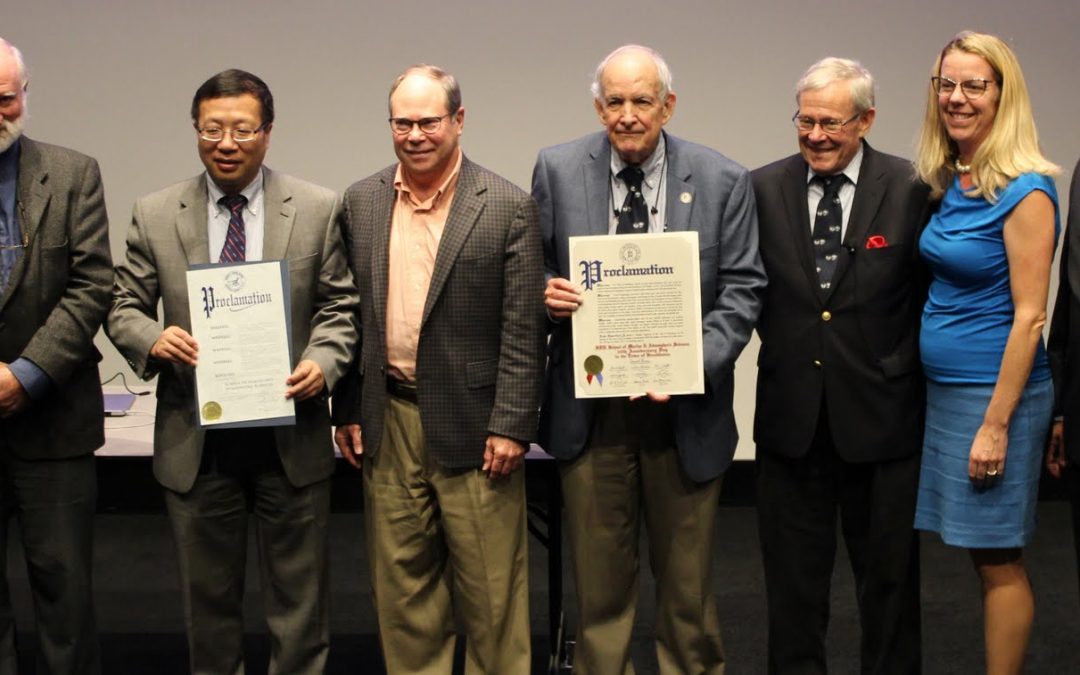
Celebrating 50 Years With The Risk Of Saying Nothing
Photo above: At the keynote for our “Risk of Saying Nothing” environmental media conference, five Deans stand with proclamations from local government officials. From left, Valerie Cartright, Town of Brookhaven Councilwoman, Dr. Malcolm Bowman, Dr. Minghua Zhang, Dr. J. Kirk Cochran, Dr. Larry Swanson, Dr. Jerry Schubel, Kara Hahn, Suffolk County Legislature, and Brookhaven Town Supervisor Edward P. Romaine
Interim Dean Larry Swanson kicked things off by welcoming everyone to the event and introducing the return of former Dean and Director Jerry Schubel and his wife Margaret. Larry also took a moment to dedicate the event to Robert de Zafra, who “died peacefully in his sleep” on October 10, 2017 after fighting pneumonia. He then introduced the first speaker, Dr. Malcolm Bowman.
Dr. Malcolm Bowman gave a brief history of SoMAS/MSRC with his talk “SoMAS: This Is Your Life!” The complete SoMAS Timeline is available with all the details. His presentation highlighted the key players who helped earn MSRC and SoMAS the reputation it now has. He also discussed the origins of our buildings on South Campus–they are named after ships, not the space shuttles!
The Dean of the School of Journalism and close friend to many at SoMAS, Howard Schneider, gave a talk about the “Fake News Invasion” and how to fight fake news. He highlighted several key items, including the Center for News Literacy’s online course on “Making Sense of the News” that helps fight the spread of fake news. He also discussed how a joint collaboration between SoMAS and the School of Journalism started by students in the Stony Brook Meteorology Club gave SoMAS students in the ATM program an opportunity to gain broadcast experience. One of the first graduates of this collaboration, Andrew Samet, went to WTOK TV in Meridian, MS as their TV meteorologist and stayed on the air through the recent hurricanes in the area!
Dr. Christine O’Connell, an Assistant Professor in the School of Journalism and a SoMAS alum, gave a talk on the “Communication and Connection in Science.” Her interactive talk had everyone out of their seats participating and highlighted the importance of making meaningful and appropriate connections to anyone listening to you speak about your science.
Dr. David Taylor, an Assistant Professor in Sustainability Studies at SoMAS, gave a talk on “The Curious Place for Poetry in Environmental Communication” and reminded the audience that poetry has been a part of our history and is still an important resource in the connections and communication of science.
Dr. Minghua Zhang, Professor and former Dean of SoMAS and currently the Editor-in-Chief of JGR-Atmospheres, gave a talk on “The Path Toward Open Access Publications.” His talk highlighted the rise of fake and predatory journals and the efforts done to expose them, including Beall’s list.
Dr. Heidi Hutner, Director of the Sustainability Studies program and Associate Professor, gave a talk on “Environmental Communication – Writing, Media and the Arts” that showcased a variety of ways people have communicated environmental issues. Her talk highlighted activism through music and artwork as well as cinema and documentary film making.
The afternoon session moved to the Charles B. Wang Center on Main Campus, where former Dean and Director and current President and CEO of the Aquarium of the Pacific Jerry Schubel gave the keynote talk. His talk “Making Scientific Research Count for the Next 50 Years; Some Thoughts” highlighted the history of MSRC and touched on the work that Dr. Schubel has done in his time since his tenure at Stony Brook University. A short film highlighted the variety of media utilized at the Aquarium of the Pacific to communicate science and engage visitors.
After Dr. Schubel’s talk, Interim Dean Larry Swanson accepted two proclamations from Kara Hahn of the Suffolk County Legislature, and Brookhaven Town Supervisor Edward P. Romaine. Hahn, Romaine and Valerie Cartright, Town of Brookhaven Councilwoman gave remarks about the impact that SoMAS has had on the local community. After the remarks, the group was joined by the other former Deans in the audience for a group photo.
The reception afterwards at Club Red was co-hosted by the Stony Brook University Alumni Association. SoMAS Interim Dean Larry Swanson, Alumni Association Director Matt Colson and Stony Brook University Provost Michael Bernstein thanked everyone for joining the celebration of our 50th anniversary.
Back on Main Campus, Dr. Carl Safina, Endowed Professor at SoMAS, gave the Wolfstock Faculty Lecture, “The Ocean and You.” His lecture documented the aspects of his life that moved Carl in areas of environmental conservation.
A variety of photo exhibits in Discovery Hall highlighted our current and former research vessels, the building and dedication of The Boathouse, a historical journey through possible expansion plans at the Southampton Marine Station when it was still Long Island University. and the original layout of the Fishing Vessel Bagatell before she was converted to the Research Vessel Seawolf. The entrance of Challenger Hall, beneath the sculpture “Tofyk” by Barbara Miller, had a collection of old photos of the people at SoMAS. In MASIC, the collections of Akira Okubo and Petra Udelhofen were available for browsing.
The Sustainability Studies office in Endeavour had a display of photos and products from the Graphic Arts Department, including Onrust brochures and plans, a variety of MSRC logo designs, drawings and stylized photos in the time before computer-aided software. The Plotter Room had the “Rogues Gallery” collection, old MSRC TShirt designs, the newsletter archive and the archive of old cameras and videocameras. In the hallway, old photographs of the Flax Pond Marine Lab and a series of brochures advertising our former educational programs filled the walls. Around the corner, an archive of old name plates and a memorial to those we have lost offered a moment of pause. On the opposite corner of Endeavor Hall, a collection of old MSRC-branded merchandise was on display.
The 50th Celebration program is available to download. Visit the links below to check out the photo albums:
- Exhibit Photos
- Morning Seminar in Endeavour 120
- Keynote Seminar and Reception on Main Campus
- Breakfast on the Seawolf
- Wolfstock Faculty Lecture with Carl Safina
Photos by Ginny Clancy, Malcolm Bowman, Tom Wilson and Mark Lang
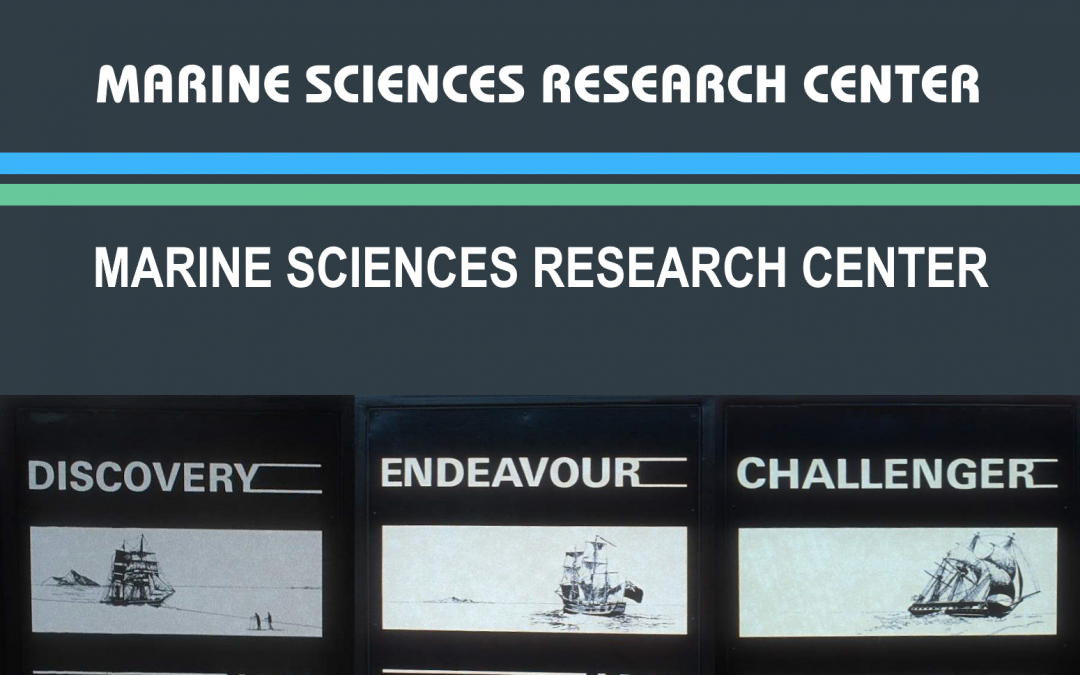
The History of the Buildings of SoMAS
South Campus
Contrary to popular belief, the SoMAS buildings on South Campus are not named after shuttles in the space program. In fact, our buildings and the space shuttles share their names from the same source: famous ships. A recently discovered memo from February 23, 1982 revealed a few more details about the building name choices.
The buildings of South Campus are designated with the name SURGE and a letter for each building. What is now Endeavour was G Building, Discovery was H Building, Challenger was F Building and Dana was D Building. In the early 1980s, Dean Jerry Schubel authorized a naming contest for each building at MSRC. A nautical theme was chosen for the contest. A representative from each building was responsible for finding suggestions, which were then voted on by the occupants. Coastal Marine Scholar Bill Dennison was responsible for SURGE H, Dr. Edward Carpenter was responsible for SURGE F, Dr. Malcolm Bowman was responsible for SURGE J and Dr. Glenn Lopez for SURGE D.
Dr. Bill Dennison, currently at the University of Maryland, chose the name of Discovery for H Building. According to him, “Discovery had an amazing history, including taking Robert Falcon Scott and Ernest Shackleton to Antarctica, which intrigued me” because “I liked and still like nautical and science history.” Discovery I and II during 1925 to 1934 made extensive surveys, mainly in the Southern Ocean while taking soundings with marine biological work and making physical and chemical observations. Along with other ships of their type they opened the field of descriptive oceanography. Through the extensive work of the Discovery Expeditions around Antarctica, the Scotia Sea – Drake Passage area came to be one of the best chemically and biologically known oceanic areas in the world.
Dr. Malcolm Bowman chose the name Endeavour for G Building based on the importance of the boat in New Zealand, Dr. Bowman’s birthplace. The HMS Endeavour was commanded by British Lt. James Cook on his first voyage from Britain to Australia and New Zealand. To prove the point of the iconic nature of the boat, Dr. Bowman is reported to have pulled out a New Zealand coin with the boat’s impression on the back. The vessel was to chart vast, relatively unknown, areas especially in the South Pacific. Cook set sail in 1768 from England accompanied by several scientists. On their voyage they discovered the Society Islands and charted the islands of New Zealand and explored the east coast of Australia. Cook was the first
explorer who, with the proper instruments, was able to determine latitude and longitude accurately.
Dr. Edward Carpenter, now at San Francisco State University was a physical oceanographer in F Building and chose the name Challenger. The HMS Challenger and the 1872 expedition named after the boat laid the foundation for oceanography and the name was the only logical choice. The most extensive oceanographical expedition ever undertaken was the cruise of the Challenger from 1872 to 1876. This expedition under the direction of Sir C.W. Thomson, circumnavigated the world. The Challenger, a 226-foot, 2,300-ton steam corvette, outfitted with zoological and chemical laboratories, made observations of many aspects of oceanography. Data were collected on weather, currents, water temperature, water composition, marine organisms, and bottom sediments. More than 4,700 new species of marine life were discovered. A deep-sea sounding of 4,475 fathoms (26,850 ft), the deepest that had been made at that time, was made in the Marianas Trench. This area is now called the Challenger Deep.
The naming of D Building has an interesting “evolution.” D Building was home to several faculty with strong evolutionary interests. Originally, the residents of D Building wanted to name the building after Charles Darwin, the renowned scientist. Unfortunately, that name did not fit the theme set by Jerry Schubel, but the name of the ship that Darwin sailed on for his famous trip was suggested. That vessel, the HMS Beagle, was deemed an inappropriate name given D Building’s history of maintaining lab animals for biomedical research, including dogs. Dr. Glenn Lopez chose the name Dana for D Building after the Danish ship Dana II, the “ship used by Johannes Schmidt during a voyage funded by the Carlsberg Foundation that ended up discovering that both American and European eels spawned in the Sargasso Sea.” Two important oceanographic cruises after World War I were the DANA I (1920-22) and the DANA II (1928-30). These expeditions originated in Denmark and explored the Atlantic and the Indian Pacific in their travels around the world. Their fields of interest lay mainly in Biology and Physics and during one of the voyages the breeding place of the European eels in the Sargasso sea was discovered.
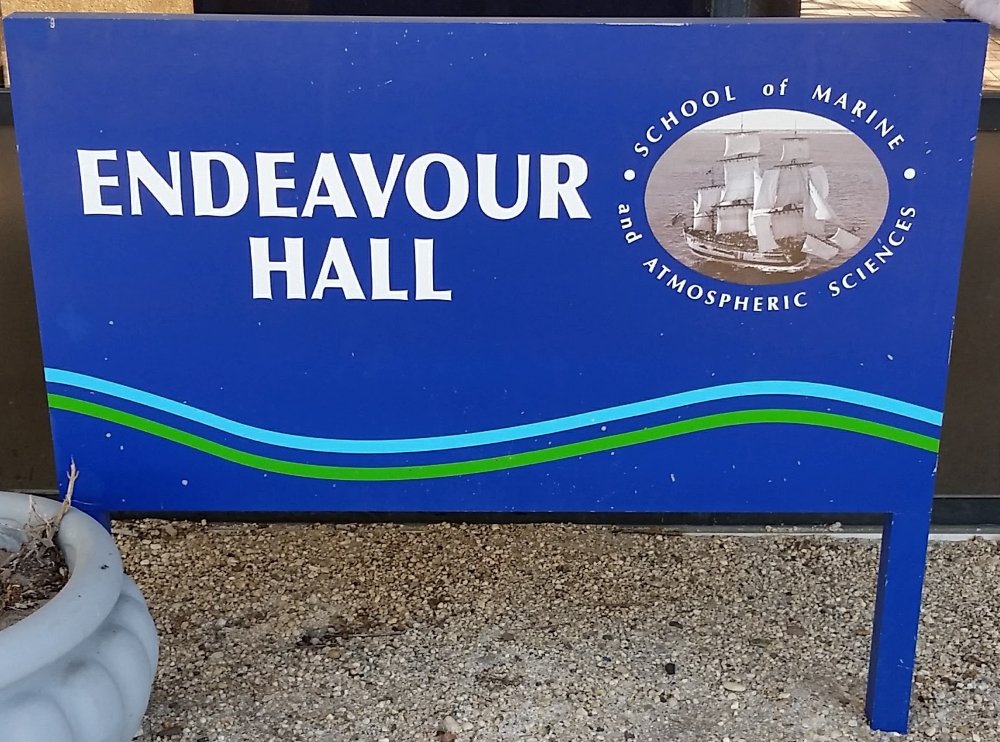
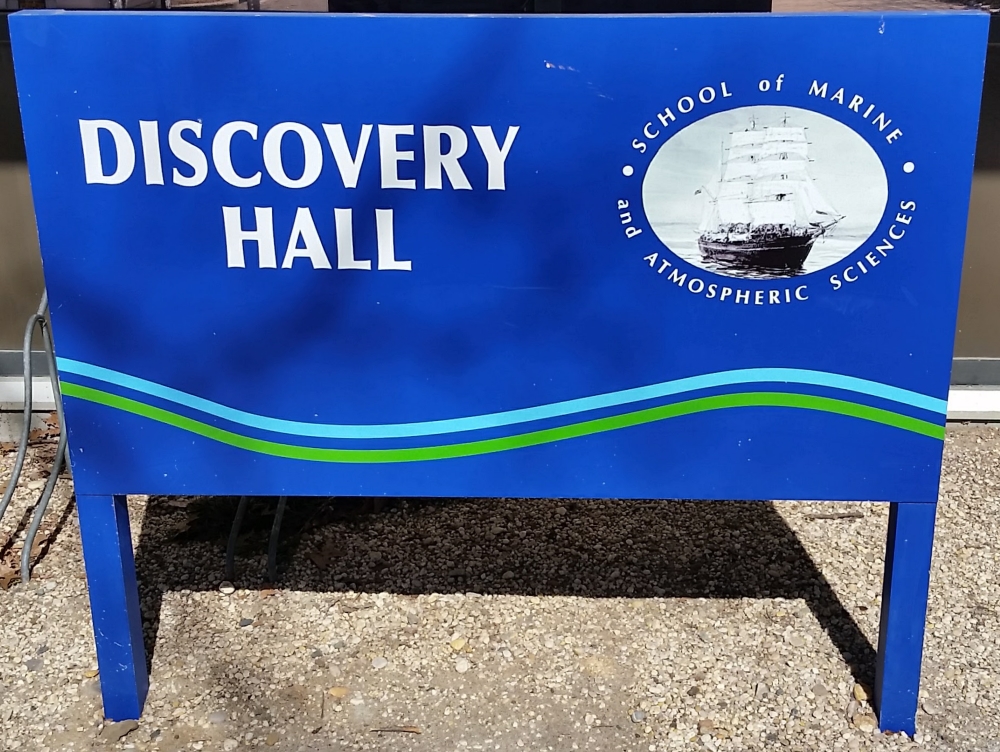


In Endeavour Hall, a shark was installed near the main entrance by the aquarium. In Discovery Hall, a sea horse was installed near the entrance by the Boat House. In Challenger Hall, a pair of dolphins were installed as you walk through the doors closest to MASIC. Dana Hall was the first building were the floors were repaired and unfortunately the tile replacement work was completed before any tile artwork could be installed. When SoMAS had a presence in Dutchess Hall, a turtle was installed. When SoMAS moved out of Dutchess Hall and the Stony Brook University Police Department moved in, the turtle was replaced with a police badge.
Many thanks to the efforts of John Marcinka from New Construction and Kevin Tumulty in Environmental Health and Safety for their help getting the tile artwork installed.
Flax Pond Marine Laboratory
The Flax Pond Marine Laboratory is named after the tidal estuary on which is resides, Flax Pond. According to the Friends of Flax Pond, the pond was originally named Fresh Pond. The name changed in the 18th century when the pond was known for its use to separate the fibers of the flax plant in a process known as retting. In the 19th century, an inlet was created to open the area of shellfishing.
Natural Sciences Center
The Natural Sciences Center at the Southampton Campus is home to the SoMAS faculty based in Southampton. The building was built by the SUNY Dormitory Authority for the LIU Southampton Campus and dedicated in September, 1965.
Take a virtual tour of the Natural Sciences Center.
Marine Sciences Center
Opened in 2013, the Marine Sciences Center on Old Fort Pond Bay at the Southampton campus is a brand new building that houses classrooms and research laboratories. The building is LEED certified. It was built on the site of the former marine station.

The Artwork at SoMAS
George Krauter
Happy Together, 1988
This sculpture is located in Challenger Hall at the entrance to the Marine and Atmospheric Sciences Information Center (MASIC). Artist George Krauter recalls that his “first instinct was to build a very realistic model of some form of sea life,” however the class he was taking at the time “focused on abstract 3d design, so that determined the final design.” The final design shows two whales swimming through a kelp forest.
Gregory Williams
Sea Level, 1988
This sculpture located in Endeavour Hall near the Dean’s Office.
Gregory Williams spent his last year at Stony Brook University in the sculpture lab, a place he “called home.” In 1987, his instructor, Molly Mason, informed the class of a contest where students could submit a model for a sculpture to be replicated on a larger scale. The winning entries would reside in the Marine Sciences Research Center (now the School of Marine and Atmospheric Sciences), a place on South Campus that Greg had “never even known existed before”. His class made a trip down there to scout out locations and inspiration for their creations. A few students submitted proposals and were granted funds to purchase the materials for their sculptures. The artists received independent study credit for their efforts.
Greg’s vision was created from sheet metal, and he called on his friend Dickey Makley, whose father owned a metal fabrication business, for help. Dickey was able to get the two sheets of 4’x8′ sheet metal, at 10 and 12 gauge, and also had the machinery Greg could use to shape and form the metal.
While working in the shop from the model he had created, Greg tried to explain his vision to the others working in the shop, who were not very knowledgeable about high art. “The puzzled look on their faces,” he recalls, “was PRICELESS!” As Greg showed that the 4 strips of metal on the floor would be like louvers which represented waves on the ocean, Dickey’s father looked at his son and said “Hey Dickey! Don’t step in the PUDDLE!” The group shook their heads amidst howls of laughter.
Hanging the heavy, steel wall relief was an arduous task and Greg asked his father for help. Greg recalls that he and his father “did not have a great relationship at this particular time” of his life. He notes that his father “didn’t hesitate to jump on board” and that “looking back, this is one of the many traits that defined him–he was reliable.” Greg remembers the experience as “one of the only times we actually worked well together” and his father’s respect for him “was growing and I could tell he was proud of what I was doing.”
Greg said that “I have always been very proud to have my work and name hang so prominently in the entrance to Endeavour Hall.” He returned a few years ago with his family on a trip to Long Island from New Hampshire. He brought his daughters to Stony Brook University to visit “Sea Level.” Greg noticed that his artwork needed to be restored and met Mark Wiggins, the Facilities Manager at SoMAS, who provided “the supplies to bring back its luster.” Greg says that “it is truly an honor to be a part of the great history of the building and the University. “Sea Level” is important to me for so many different reasons, thank you for allowing me to be a part the 50 year celebration!”
Claus Hoie (1911-2007)
Born in Stavanger, a Norwegian city bordering the North Sea, artist Claus Hoie was fascinated with the sea and its creatures throughout his lifetime. Hoie immigrated to America as a 12 year old, and eventually served as a member of the elite Norwegian-American battalion, the Mountain Ski Infantry in the United States Army during WWII.
One might speculate that Claus Hoie’s affinity for his East Hampton home may have been partly because of the village’s proximity to the sea and the resulting quality of light so often remarked upon by artists: light so perfectly captured by the medium of watercolor with its balanced transparency and translucence.
Claus Hoie studied at the Art Students Lounge in New York City and at the École des Beaux-Arts in Paris. The winner of major awards from such prestigious organizations as the American Academy of Arts and Letters, the National Academy of Design and the American Watercolor Society, he had an extraordinary career of more than sixty years. Hoie’s work is in collections across the United States and at the Akershus Museum in Oslo.
Gifts of the Helen & Claus Hoie Charitable Foundation, 2013
Scott Hughes ’91
Marine Sciences and Biology
Scott is now a Marine Resources Specialist at Cornell Cooperative Extension in Suffolk County.
Brian Wysor ’96
Microscope Photos of Phytoplankton
Brian is now an Associate Professor of Biology at Roger Williams University.
Chris Paparo
Chris Paparo, manager of the Marine Sciences Center at Southampton has a collection of photographs on display on the walls of the building. The photographs capture the local marine life found in the waters of Shinnecock Bay to Peconic Bay. Check out more of Chris’s photos at Fish Guy Photos.
Sustainability Studies Students
Students in Marc Fasanella’s 2010 EHM 201 Eco-Aesthetics in Art class were assigned to go out into nature and do a three step Micro-Environment Visual Inventory project. First they found something small that captured their interest and photograph it. The photo was then drawn and colored perfectly to scale on graph paper. Accompanying the drawing in another frame just below the image was a brief poetic reflection on the piece.
R. George Rowland (1941 – 1990)
The photographs gracing the walls of the Flax Pond Marine Laboratory are the work of R. George Rowland, Manager of the Flax Pond Marine Laboratory from November 1985 – December 1990.
George loved the innate beauty of coastal environments, their sundry plants and animals. Marsh grass rippling in the October wind, a gull complaining from atop a lonely piling. These remind us of our kind and gracious friend.
Endeavour Hall Room 171, also known as the Okubo Room, was Akira Okubo’s office when he was a professor at MSRC. The room is now used as a small meeting room. Inside the room is a framed portrait drawn of Akira Okubo by MSRC student Deborah Bray. Former Dean and Professor Emeritus Marvin Geller donated the Japanese art print that is also in the room.
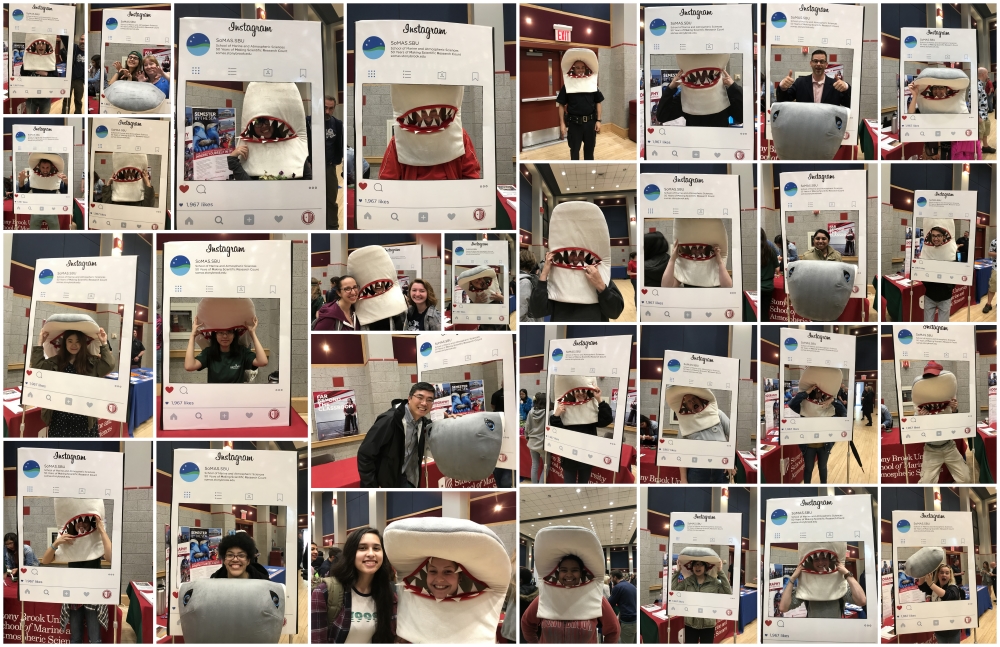
SoMAS Celebrates Earthstock 2017
On Monday April 17th, New York State Assemblyman Steve Englebright was a guest lecturer in Dr. Malcolm Bowman and Dr. Larry Swanson‘s ENS 301 class.
On Tuesday April 18th, SoMAS/SUS Alum Erica Cirino spoke about her trip to the Great Pacific Garbage Patch in her “Go and See Tour.” The video is available on YouTube. Later that afternoon, a panel discussion on “Adapting to a Changing Climate – Coastal Infrastructure and Sustainable Cities” was held in the Humanities Institute and featured CEAS Dean Fotis Sotiropoulos, Dr. Malcolm Bowman, William Golden , CEO of the National Institute for Coastal & Harbor Infrastructure and Dr. Robert Yaro from the University of Pennsylvania.
On Wednesday April 19th, SEVEN Sustainability Studies alumni returned for the yearly panel discussion: Shameika Hanson, 2015 EHM, Emily Markowitz, 2016 MAR, Mai Fahmy, 2015 EHI, Shawn Nuzzo, 2013 EDP, Liam Trotta, 2013 EDP and Erica Cirino, 2014 ENS. The discussion was moderated by lecturer Michael White and the video is on YouTube.
Thursday April 20th featured the keynote event hosted by The Sierra Club, SoMAS, Sustainability Studies and Stony Brook University. The “Roadshow of Resistance: Saving the Planet, Indigenous Rights and Standing Rock,” featured the poetry and hip-hop music of Native American Lyla June Johnson, the songs of Casey Neill, speeches by Cheryl Angel and Brytnee Laurette.
The highlight of the week was on Friday April 21st at the Earthstock Showcase. Rain unfortunately moved the event indoors but that didn’t dampen any spirits! SoMAS and Sustainability Studies were present with displays from faculty labs, clubs and associated groups.
And on Earth Day, Saturday April 22, The Environmental Club celebrated Earth Day and the end of the semester with their Green Gala.
Interim Dean Larry Swanson played a key part in many of the week’s events and had these remarks:
The week-long celebration of Earthstock was a huge success and in many ways it was due to the efforts of the staff, students, and faculty in SoMAS. The main event on Friday was moved indoors to the Student Activities Center because of the rain, so the organizational effort was greater than usual. Assemblyman Steve Englebright, Legislator Kara Hahn, and Councilwoman Valerie Cartwright participated in the opening ceremony. SoMAS clearly was dominant in showcasing its programs. There were many outstanding exhibits such as Nils’s sediment sections and Sam Gurr’s monitoring the heartbeat of a mussel. Who would have ever thought? I didn’t come very close to guessing the number of worms in Sharon’s ball of worms – or so she told me. And, Tom’s magnetic sand and other oceanic trinkets were also great.
I want to thank all who helped. I know that they worked hard to make it happen and all of us at SoMAS are greatly appreciative. Mark Lang deserves particular mention for pulling much of it together.
SoMAS was well-represented on the Earthstock Administrative Committee which included Maureen Murphy, Malcolm Bowman, Jeff Levinton, Heidi Hutner, Tara Rider and Mark Lang.
Many thanks to the following people who organized exhibits and volunteered at Earthstock:
- Mark Wiggins for providing expert logistical assistance getting exhibits, exhibitors and attendees to the event.
- Karen Warren and Maureen Murphy with the Gelfond Fund for Mercury Research
- Tara Rider and Kurt Bretsch with the SoMAS, Semester by the Sea and Summer Oceanography program.
- Nils Volkenborn with graduate students Sam Gurr and Ian Dwyer demonstrating
- Tom Wilson with Chris Crossby with the Instrument Lab exhibit
- Sharon Pochron and the Earthworm Toxicology Lab
- Rachel Silver and the Shinnecock Restoration Program
- Christina Ozelis with the Sustainability Studies program
- Nicole Casamassina, Andrew Seaman, Matthew McDermott and the Meteorology Club, advised by Brian Colle
- Kylie Campanelli and the Sierra Club, advised by David Taylor
- Chad Marvin and the SBU Gardening Guild, advised by David Taylor
- Katherine Gregory and the Environmental Club, advised by Kamazima Lwiza
Paul St. Denis and Gaoqi Zheng from the Teaching and Learning Lab visited the Earthstock Showcase with Ricoh Theta 360° camera and captured several images and video of the event. Visit their Earthstock VR Tour to check it out!
Photos taken by Malcolm Bowman, Nicole Casamassina, Mark Lang, Tom Wilson, Kurt Bretsch, Tara Rider, Mark Wiggins are available on Google Photos.
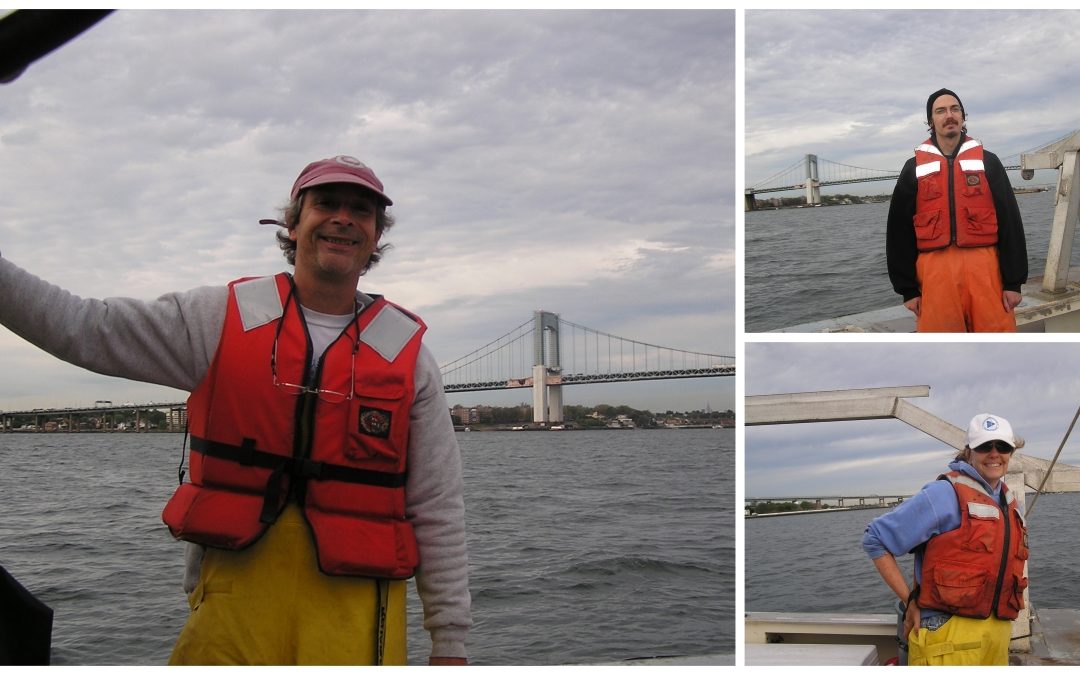
Sample Collection With a View
Dr. Bruce Brownawell and Dr. Anne McElroy with graduate student John Gondek, M.S. and Lab Technician Joseph Ruggieri completed a cruise on the Long Island Sound in 2008. Onboard the R/V Pritchard, the group was collecting sediment samples for various analyses back in the lab.
This memorable trip started with the first sampling location just east of the Throgs Neck Bridge. The group continued eastward throughout the day and completed a few transects across the sound. This collection of samples was a very extensive characterization for the Sound, complete with surface grabs and sediment cores.
Story contributed by Joseph Ruggieri

R/V Seawolf Discovery and Eagle Scout Project Becomes Port Jefferson Landmark
Have you seen the anchor at Harborfront Park in the Village of Port Jefferson , NY? The R/V Seawolf, flagship of the Marine Sciences Research Center, with Captain Steve Cluett at the wheel, “caught” the anchor on the last tow of the first trawl trip for the New Jersey Dept of Envir. Protection Division of Fish and Wildlife. The NJ DEP has been one of the longest supporters of the R/V Seawolf. The anchor was known to those familiar with the area, however it was not clear on the chart provided to the R/V Seawolf that the lines indicated areas to avoid rather than navigate.
Captain Cluett, with crew Mark Wiggins, Angie Parlatore and Dick Furbush, pulled the anchor up with their nets, revealing the captured netting from previous anchor encounters.
Steve Cluett’s son, Chris, restored the anchor as part of an Eagle Scout project. Chris was able to date the approximate age of the anchor (1890-1910) because the foundry’s name is still on the cast iron stud link chain studs, and Bryn Mawr College maintained the Philadelphia business records to date the foundry.
The anchor was gifted by Captain Cluett to Jeanne Garant, then-Mayor of Port Jefferson Village. The full story of Chris Cluett’s restoration of the anchor, covered by Kathleen O’Sullivan of the Port Times Record, is below.
From Scout’s project to a village treasure
With some assistance, Cluett gives Port a new landmark
BY KATHLEEN O’SULLIVAN
Chris Cluett. about to enter his sophomore year at Earl L. Vandermeulen High School in Port Jefferson, completed the major portion of his Eagle Scout project this summer by restoring an anchor dating back to at least 1900. The anchor will soon have a permanent home in front of the Village Center at Harborfront Park in Port Jefferson.
The two-ton anchor was trawled up during a fisheries survey in 2002 by the Seawolf, Stony Brook University’s Marine Science research vessel, captained by Chris’s father, Steve Cluett. It was found near Ambrose Channel, the entrance to New York City harbor.
Captain Cluett, who worked at his son’s side throughout the project, said he is very proud of Chris’s accomplishment. He is also is very grateful to former Mayor Jeanne Garant, and grant manager Bob Thmilowicz. who supported the project from the beginning. Port Jefferson’s present mayor, MichaeI Lee, a long-time scout leader himself. is also very proud of the accomplishment and says that plans are underway to move the anchor to its permananent home in the courtyard of the new Village Center.
Cluett is a member of Scout Troop 45 based at the First Presbyterian Church on Main Street, a troop that has been in existence for more than 75 years. The mayor has known Chris since he was II years old because that is when Chris went on his first rafting trip. which was led by Lee.
Chris says that restoring the anchor was a great learning experience for him. He said he had to approach village officials for their approval, and he had to get donations from local businesses for materials. Since an Eagle Scout project is, in essence. leadership training, he also had to organize members of his troop to help. Over 40 man-hours of work went into chipping off the anchor’s century of rust and corrosion.
After the anchor was cleaned down to bare iron, chemical Solutions were applied to get rid of all remaining salt and to protect against future corrosion. After much discussion it was decided to use a final coat of Marine Penetrol to finish the job. as it helps the anchor retain its natural look.
Chris solicited donations from West Marine for the prepping materials like phosphoric acid to stop the rust. He received safety equipment such as goggles and gloves from Ace Hardware and Fox Hardware. Seven Seas Construction donated help to move the anchor and gave the paint for the final coat.
Part of the project was to discover the history of the anchor. Chris and his family went to Mystic, Connecticut where they discovered information on anchors and old ships in the research library.
“We found some writing on the chain that dangled from it,” said Chris. “It said Bradlee & Co. and Philadelphia. We found an address for the company dated 1898. So we are pretty sure the anchor dates from that time.” Father and son hope to do more research before the end of the summer at the Naval Shipyard Museum in Norfolk. Virginia.
Chris’s mother Ann says the family saw a collection of anchors at Mystic and were Impressed at how good theirs looked when restored. “I think we took more time chipping off all the old rust,” she said. Both she and Chris’s sisters helped.
Captain Cluett describes finding the anchor on one of his fishing trawl surveys as “precarious,” The anchor got caught in his net and there was no way to untangle it at sea. He couldn’t afford to lose the net, which costs thousands of dollars, and he was afraid of snapping a cable if he dragged it. The only solution was to winch it up and secure it to the back of the boat and come home with it. Dieter Lund of Seven Seas Construction brought his crane to lift it off.
What could have been a disaster for the Seawolf has become a treasure for Port Jefferson.
The anchor actually belonged to Stony Brook University until it was generously donated by the university to the village last year. Now it will remain a symbol for future generations not only of the great ships that used to sail local waters but also of a great young man and his scout troop, It seems that young Cluett could not have chosen a more appropriate task for his Eagle Scout project, which brought pride to his illustrious scout troop as well as to the village.
Above: Anchor surface during restoration, after chipping, prior to chemical treaments.
Above: Boy Scout Troop 45 chipping crew
Above: Pressure washing anchor with salt removal solution.
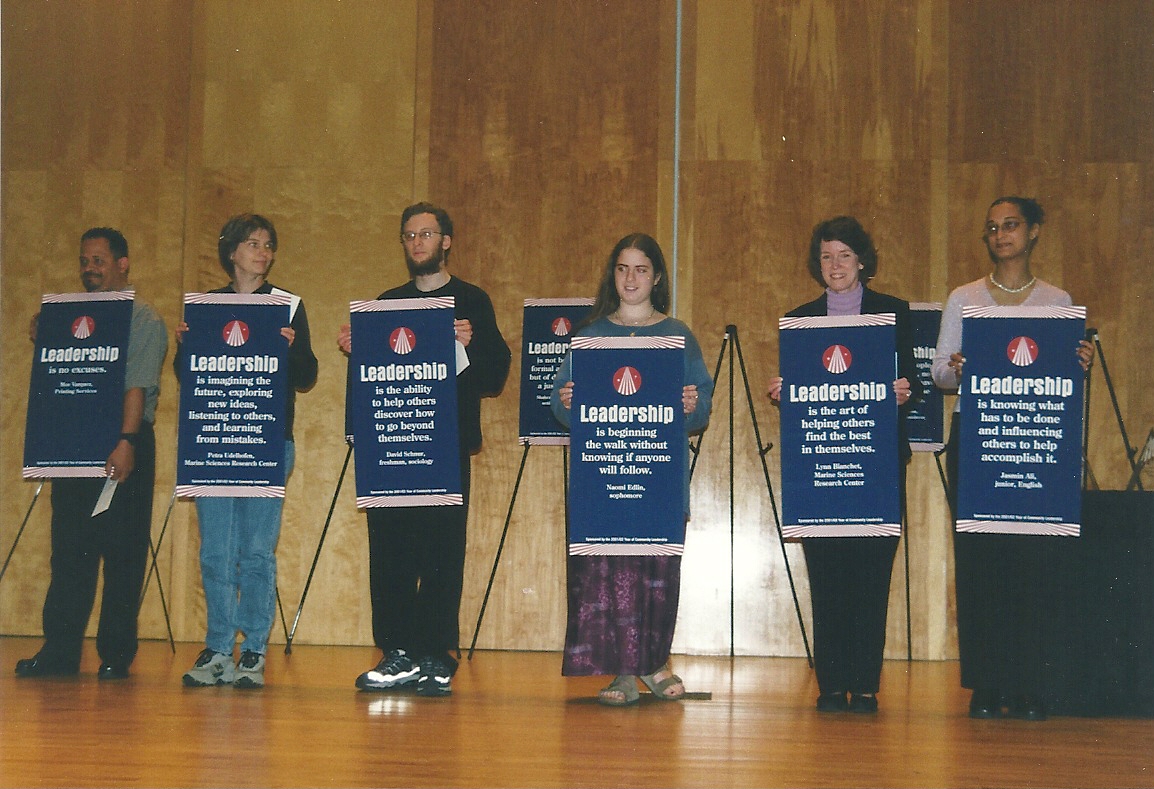
MSRC Winners of SBU’s “What is Leadership?” Contest
Two members of the MSRC community know what leadership is. Stony Brook University initiated a contest for the “What is leadership?” banner during the Year of Community Leadership. The winning banner was revealed on April 29, 2002.
From the 10 selected definitions, two of the winning entries are from MSRC faculty and staff. Lynn Bianchet crafted leadership is “the art of helping others find the best in themselves”. The winning entry by Petra Udelhofen, MSRC/ITPA adjunct faculty, reads leadership is “imagining the future, exploring new ideas, listening to others, and learning from mistakes”. The winners received $100 and a poster of the banner on April 29, 2002 in the SAC. Congratulations!
Petra Udelhofen’s banner currently hangs in Endeavour Hall.
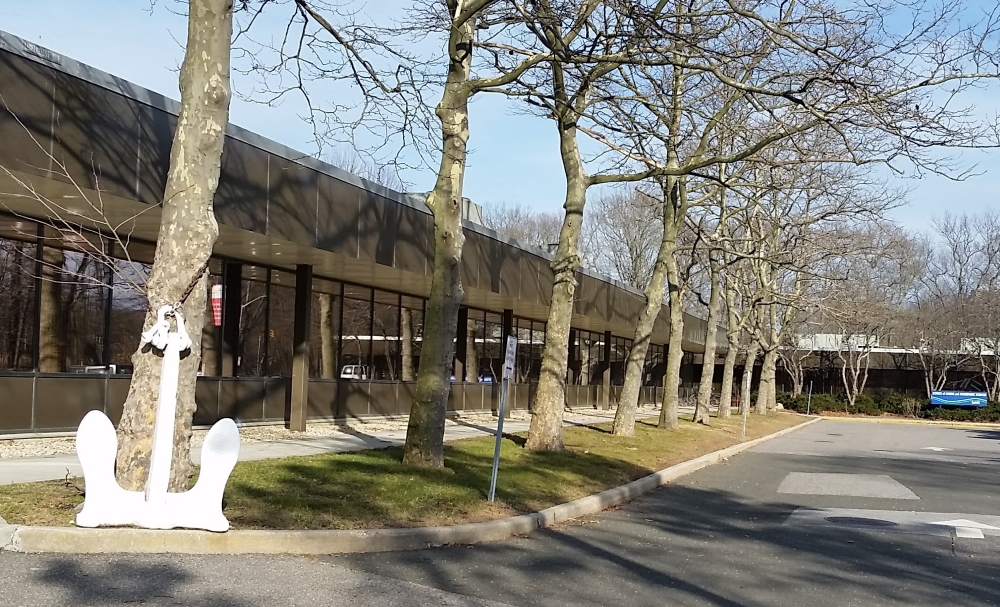
The White Anchor at SoMAS
The big, white anchor attached to the tree near Discovery Hall as you come into SoMAS is a “Navy Anchor”.
In 1980 the Marine Sciences Research Center had a project in the Lower Bay of New York Harbor (Burial of Dredged Sediment Beneath the Floor of New York Harbor) with the U.S. Army Corps of Engineers (USACE). The Army Corps of Engineers set a marker buoy attached to this anchor at the site. When the project was over the anchor was pulled up and dropped off at the USACE facility in Bayonne, NJ (Caven Point), and offered to the Marine Sciences Research Center. Chester Arnold (MS, 1982) and Dr. Henry Bokuniewicz rented a truck and drove out to get it. On the way back, the truck broke down somewhere on the (long) approach ramps to the Lincoln Tunnel. In 1980, there were no cell phones, so Arnold and Bokuniewicz walked down into a (rather unpleasant) part of New Jersey and called the rental company who indicated they would send another truck and “transfer over load”.
The white anchor easily weighs more than 2000 lbs.
Bokuniewicz advised the rental company that they weren’t going to be able to transfer the load without a fork-lift, and instead the truck was towed to a salvage yard nearby. The anchor was moved to the replacement vehicle with a pay loader truck successfully made the trip back to Stony Brook University. The tree was as far as the anchor made it in the unloading process. Facilities Manager Cliff Jones, now retired, painted the anchor white and secured it with chains to the tree. The tree has since grown around the anchor.
MSRC Newsletter Vol 1, No. 1
The Marine Sciences Research Center Newsletter will report to members of SUNY developments in the University’s expanding marine program. This initial issue will provide a brief introduction to the Center and its staff in addition to describing significant events that have occurred since the Center was created by the State University trustees in March, 1965. The Newsletter is initially scheduled to appear three times yearly–Spring, Fall and Winter. It will be published more frequently as the University’s fledgling marine program gains momentum.
The Center and Its Staff. The establishment of the Marine Sciences Research Center (MSRC) of the State University of New York was the logical outgrowth of two phenomena: the increase during the 1960’s of a national awareness of the marine environment’s importance to man, causing oceanography to emerge from relative obscurity to become one of science’s most dynamic disciplines; and New York State’s strategic geographic position for study of the marine habitat, being bordered by the Atlantic Ocean and two Great Lakes.
New York’s Board of Regents and the State University Trustees realized the wealth of opportunity that this dual situation offered the University but also recognized the great costs that would be entailed. They created the Center as a focus for the University’s expanding marine program to assure the development of comprehensive, SUNY-wide activities which avoided wasteful duplication of effort.
Located on the Stony Brook campus, the only State University Center with direct access to the sea, the MSRC will direct its resources toward understanding the total nature of the marine environment and the forces–natural and man-made–that interact with it. Such a multi-faceted effort will draw upon the expertise of the many disciplines contained within the natural, engineering, social and health sciences. In implementing such a program, the Center seeks to coordinate interdisciplinary marine research and instruction throughout SUNY. It will collaborate with agencies of many kinds-government at all levels, industry, private conservation groups, etc.
The MSRC staff at present includes 8 professional and semiprofessional members, plus supporting technical and secretarial personnel. In September, 1968, Donald F. Squires (Ph.D, Cornell) an expert in invertebrate zoology, systematics and coral-reef ecology, was appointed Director of the Center as well as Prof. of Biological, and Earth and Space Sciences at Stony Brook. Prior to accepting this position, Dr. Squires served as Deputy Director of the Smithsonian Institution’s Museum of Natural History.
Following are listed other members of the Center’s staff and their special interest areas (academic appointments indicated are with SUNY at Stony Brook): Edward R. Baylor (Ph.D., Princeton), Prof. of Biological Sciences–behavior and physiology of marine organisms; Thomas Goreau (Ph.D., Yale), Prof. of Biological Sciences, Resident Director of the Center’s Discovery Bay Marine Laboratory in Jamaica, W.I.–coral-reef ecology; Meredith Grant Gross (Ph.D., Cal. Tech.), Assoc. Prof. of Oceanography–sediments, marine geochemistry; Peter K. Weyl (Ph.D., Chicago), Prof. of Oceanography–ocean currents, marine geochemistry and physical oceanography; George Williams (Ph .. D., D.C.L.A.), Prof. of Biological Sciences–planktonic fish ecology and evolution; Peter deNyse, Administrative Assistant; and Judith D. Smith, Special Assistant for Sea Grant Activities and Editor, MSRC Newsletter.
The Center’s professional staff is projected to increase to approximately 25 members. In addition to the natural sciences, the engineering, social and health sciences will be represented.
Two facilities of the Center ready for use. Two of the Center’s proposed network of affiliate laboratories are now available for limited use by SUNY researchers. These are the Flax Pond Research and Study Site, a wetlands area on the North Shore of Long Island, and the Discovery Bay Narine Laboratory, Jamaica, W.I.
Flax Pond, which the University owns jointly with the N.Y.S. Dept. of Conservation, is 3 miles from the Stony Brook campus. The site is approximately 160 acres in size and consists of Sparti~a marshlands and gravel beaches bordered by an upland grass and cedar environment. Rich in terrestrial and marine wildlife, the region is suitable for many types of biological as well as geological studies. The State University plans to erect a 15,000-square-foot laboratory on the site, but for the present faculty should plan to employ the area for field study only.
The Discovery Bay laboratory, headed by Dr. Thomas Goreau of the Center, is ideal for tropical studies, particularly of coral-reef ecology. The variety of habitats-underwater (coral-reef, rocky, sandy, grass-flat, deep-sea) and cifastal (rocky, sandy,muddy, estuarine, mangrove, lagoon)–within easy reach of the laboratory makes the area suitable for a wide range of zoological studies. The U. of the West Indies shares in the operation of this site.
Brochures describing Flax Pond and Discovery Bay are in preparation. Prior to their publication, inquiries concerning either facility may be addressed to the Facilities Manager, c/o the MSRC. All SUNY faculty wishing to use these sites for research or education are encouraged to do so.
39-Foot research ship purchased by the Center. The MSRC took delivery in April of a new research vessel for use by members of the State University. A former Maine lobster boat, the ship is no thing of beauty but is excellently suited for work in Long Island Sound. A contest is under way to select a name for this worthy craft. Specifications: Length, 39′; beam, 12′ 6″; draft, 3′ 6″ • Oak framed with cedar planking. 15 Knot maximum, l2-knot cruising speed. The Center is equipping the vessel to a limited extent now and will improve the facilities after requirements are further assessed. SUNY personnel are encouraged to use the boat for research or class instruction and should contact the Facilities Manager for scheduling, costs and types of gear required.
The Center has arranged to charter larger vessels as needed. At present, a 70-foot oyster dragger ($125/day) and a 65-foot T-boat ($250/day) are available.
INTERCAMPUS LIAISON
MSRC Advisory Committee appointed. In keeping with the MSRC’s University-wide responsibilities, an Advisory Committee, composed of faculty from SUNY colleges with marine programs, was established in 1966 to participate in the Center’s major policy decisions. The Committee, which meets approximately every 6 months, is currently composed of the following members: Dr. Meir H. Degani, Maritime College at Fort Schuyler; Dr. Thomas W. Donnelly, Binghamton; Dr. Robert D. Hennigan, Syracuse (Water Resources Center); Dr. John M. Kingsbury, Cornell (Agriculture); Dr. George R. Maxwell, II, Oswego; Dr. Vincent J. Schaefer, Albany; Prof. Walter L. Smith, Suffolk County Community; Dr. John F. Storr, Buffalo U.; and Dr. Robert A. Sweeney, Buffalo ColI.
As an initial step in appraising the scope of SUNy’s marine activities, the Center is working to identify the marine interests, and researchers, of each campus and to assist in the development of activities where limited experience exists. Toward this end, Dr. Squires has visited many campuses to date and plans to visit all campuses as early as possible.
–Six SUNY colleges played host to distinguished marine scientists this winter, in a series of seminars sponsored by the Center. The invited speakers, and their topics of discussion, were: Dr. John Lee of CCNY–microfauna in a square millimeter of ocean bottom; Dr. John Bunt, U. of Miami–sea ice as a site for primary productivity; Dr. Charles Brown, U.S. Navy Underwater Sound Lab.–study of plankton biology through underwater accoustics; Dr. John Kingsbury, Cornell–economics of Irish moss; Dr. Peter Dehlinger, U. Conn–the origin of the Juan de Fuca and Gorda ridges in the Northeast Pacific; Dr. Allan Faller, U. Maryland–recent studies of flow discontinuity circulation; Dr. Redwood Wright, Woods’ Hole Oceanographic Inst.-potential energy and the circulation of the North Atlantic; and Dr. Jack Pierce of the Sandy Hook (N.J.) Marine Lab.–some quantitative aspects of benthic ecology.
–Approximately 65 administrators and faculty from 20 SUNY 2-year colleges will attend a meeting at the Center on May 16 and 17 to discuss the potential for further development of marine technology programs. The meeting will highlight employment opportunities, training programs, and curriculum and facilities requirements. It has been scheduled in response to the great interest of the 2-year colleges in this field.
RESEARCH ROUND-UP
Thermal pollution study begun by the Center. Work will begin in mid-April upon the initial phase of a long-range study of thermal pollution in Long Island Sound. The project’s major purpose is to spell out, through physical, chemical and biological investigations, the precise impact upon the Sound’s ecology of heated water discharged from power plants. In addition, the economic, social and political factors related to the increased power needs of the area’s rapidly growing population will be considered.
As part of this program, the Center plans to develop the .ability to predict how power plants on Long Island Sound projected for the year 2000 may, singly and/or collectively, affect marine conditions. Such a predictive capability must precede the establishment of protective regulations.
The present project, which has received approximately $120,000 in support from New York State and the Long Island Lighting Co. (LILCO), is focusing upon a single power plant–LILCO’s 2-generator unit at Northport-. Its purpose is to elucidate the problems created by thermal pollution and to define the limits of the effects of heat emitted from a single source. In addition to the Center’s staff, faculty from Suffolk Community College, Brookhaven National Labs and others will participate in this work.
Data from this pilot project will be used to plan the larger regional study of thermal pollution, funds for which will be sought from Federal and State government and from industry. Opportunities to participate in this program will be open to interested SUNY scientists.
Dumping of waste solids being probed. The increasing tendency of rubbish-besieged U.S. cities to use the oceans as dumping grounds is beginning to cause alarm in scientific circles, where the practice is viewed as the possible prelude to a serious environmental problem. New York City, for example dumps millions of tons of solid material into the Atlantic every year in the form of dredging sediments, construction debris, industrial waste, sewage sludge, etc. What chemical and physical by-products are produced when such foreign solids react with the ocean’s natural sediments? How do these by-products affect the marine environment?
These are some of the questions that Dr. M. Grant Gross of the Center intends to answer through a research program whose ultimate goal is the development of a predictive capability for the sea’s capacity to assimilate waste solids. Specifically, he is concentrating upon the following aspects of the waste-solid problem: 1. discovering what kinds of materials are being dumped, and their major sources; 2. determining the composition of established dumpsites; 3. eliciting whether substances deposited on the ocean floor undergo physical and chemical changes and, if so, how?
Dr. Gross is collaborating in this work with the Woods Hole Oceanographic Inst. (to map near-bottom waters of L.I. Sound), Sandy Hook Marine Lab. (to study sediments at a NYC dumpsite for sewage sludge), NYC Dept. of Water Resources (to study the effects of runoff from Kennedy Airport and from sewage plants into Jamaica’Bay), and the U.S. Army Corps of Engineers (analyzing sediments from a dredging project). Other SUNY personnel involved are Prof. Raymond N. Smith of Stony Brook, and Prof. Walter Smith and Mr. John A. Black of Suffolk Community College. The program will at a later date be extended to include waste-solid disposal in the Hudson River and Great Lakes.
“Challenger” cruise yields nutrient data on Sound. This past January, the MSRC sponsored a 3-day cruise aboard the Sandy Hook Marine Lab. ‘s 65-foot research vessel “Challenger,” to determine east-to-west variations in the nutrient content, temperature and salinity of Long Island Sound.. The study was conducted in winter to register conditions prior to warm-weather algal bloom; it will be repeated to determine seasonal changes. In this instance, phosphate content was discovered to be five times greater at the west end of the Sound than at the east end, the result of sewage discharged from NYC and its
heavily congested suburbs.
Dr. Peter Weyl of the Center performed the expedition’s temperature and salinity studies. Chemical and nutrient determinations were made by personnel from Suffolk Community College, Selden, L.I.: Prof. Charles D. Hardy, and technical assistants Edwin L. Sherril, Allan T. Plitt and Harry H. White, Jr. The expedition made use of the docking facilities o’f the SUNY Maritime College at Fort Schuyler.
Marine Alert aids public reporting of marine events. Primarily as a public service but also as a way to collect potential research data, the MSRC has set up a “hotline” telephone over which unusual or dangerous marine phenomena observed off the coasts of New Jersey, New York and Connecticut may be reported to the Center. Formerly, many such attempts on the part of concerned citizens were thwarted by their inability to select from a profusion of agencies the authorities responsible for the situation at hand.
The Center’s program, dubbed “Marine Alert,” provides a single telephone number (516-246-7777) where any type of marine observation–from a boat collision to a beached whale–may be called in. The Center relays the information to the proper agencies for action, later notifying callers of steps taken to deal with the problem. The Marine Alert phone is manned year-round, from dawn to dusk, seven days a week.
Since November the Center has received complaints of five sizable oil slicks, a pesticide-induced fish kill, severe beach erosion threatening property, and a rash of calls concerning an epidemic of “angler” fish washed up on Long Island beaches. The public’s use of Marine Alert has been good to date and is expected to increase sharply as the return of warm weather initiates the annual exodus to the seashore.
Sea Grant news. As all SUNY colleges have been informed, the State University and Cornell are applying as a consortium for “institutional” support under the provisions of the National Sea Grant Act of 1966. This Act, an amendment to the Marine Resources Engineering Development Act of the same year, provides that Federal grants be given to institutions to spur, through education and research, development of the nation’s marine resources.
The Center is currently preparing a Sea Grant proposal to be submitted to the National Science Foundation, who administers the program, in the fall. If our effort is successful, funds from this source will back many of SUNY’s marine activities. Thus, “Sea Grant news” may become a regular feature of the Newsletter.
For the application, the Center has gathered from 36 SUNY campuses the names and interest areas of faculty anxious to participate in a marine program, as well as descriptions of the marine-related curricula that these campuses now offer or propose to develop.
Federally designated “marine,” the Great Lakes will fall under Sea Grant auspices. Dr. Robert Hennigan of the Water Resources Center, College of Forestry at Syracuse, will administer the Great Lakes portion of the program within SUNY.
The Newsletter would like to receive newsworthy items related to SUNY’s marine sciences program. Such material might include reports of new marine-related courses or research projects, faculty appointments, grants, fellowships, etc. This material, subscription requests and miscellaneous inquiries should be addressed to Mrs. Judy Smith of the MSRC.




















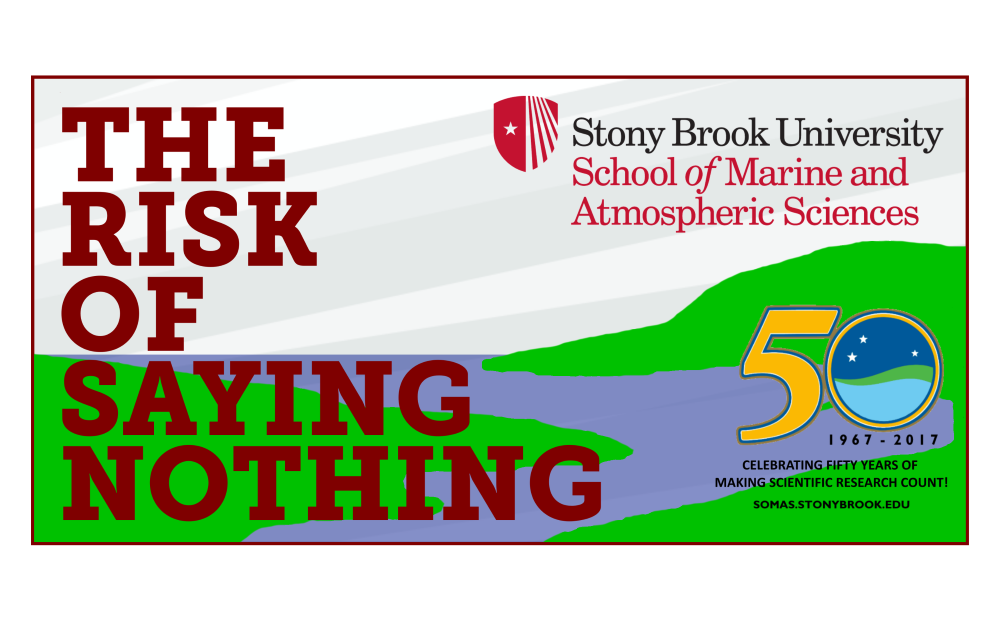
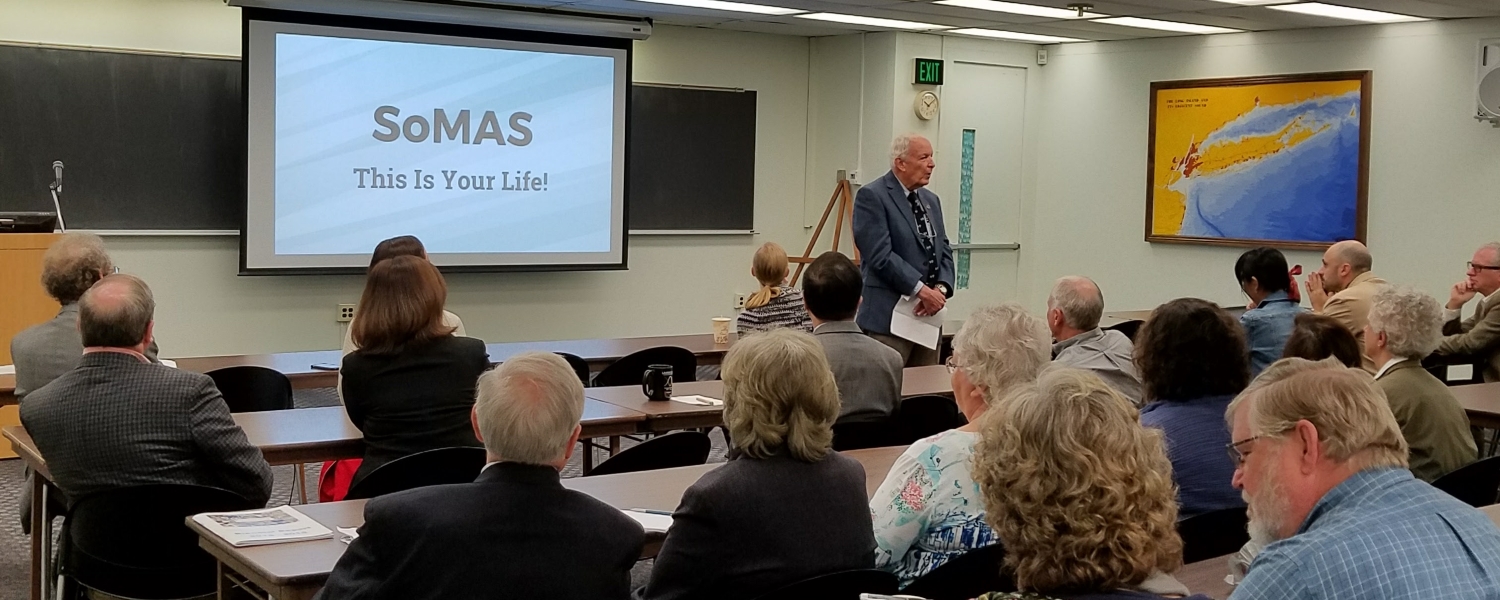


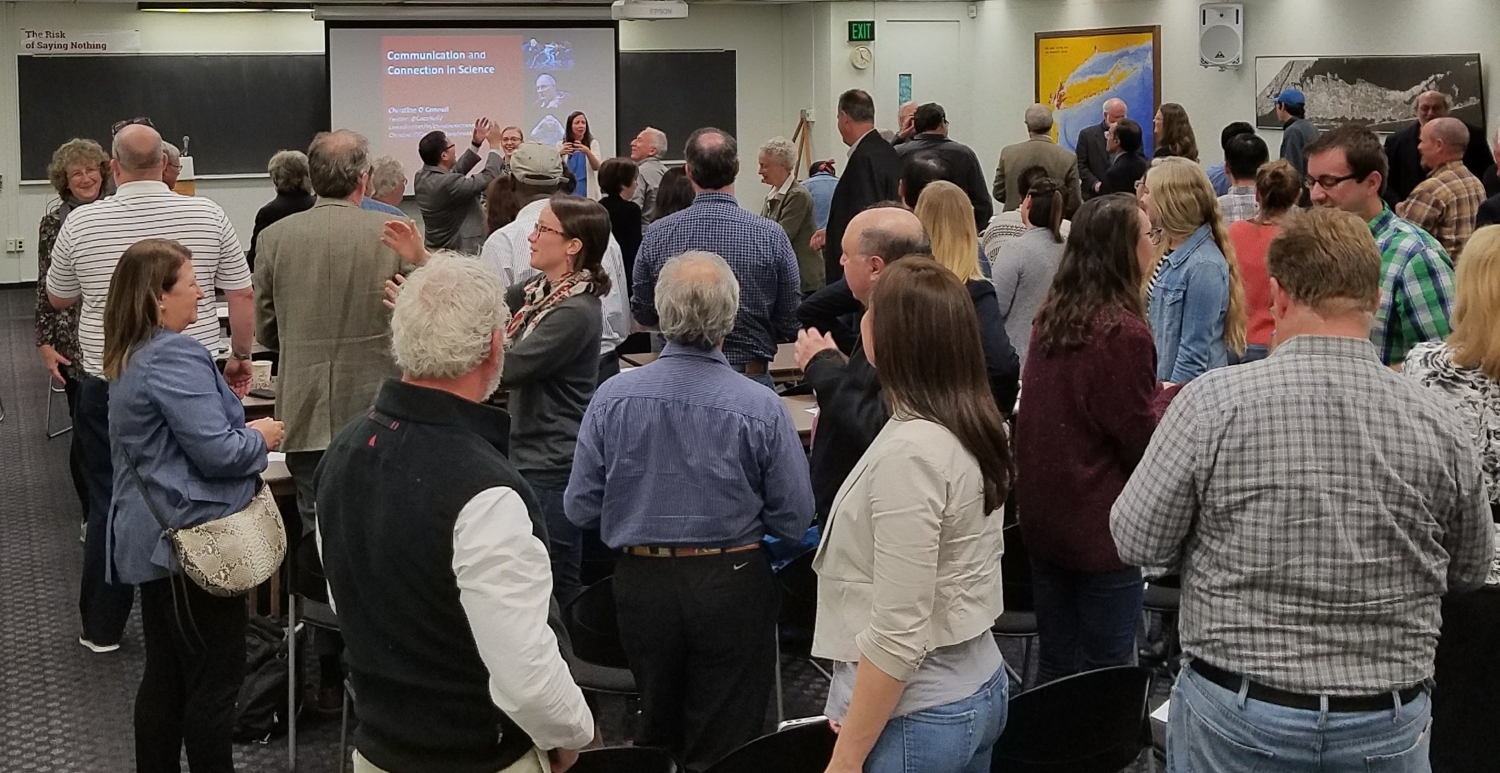
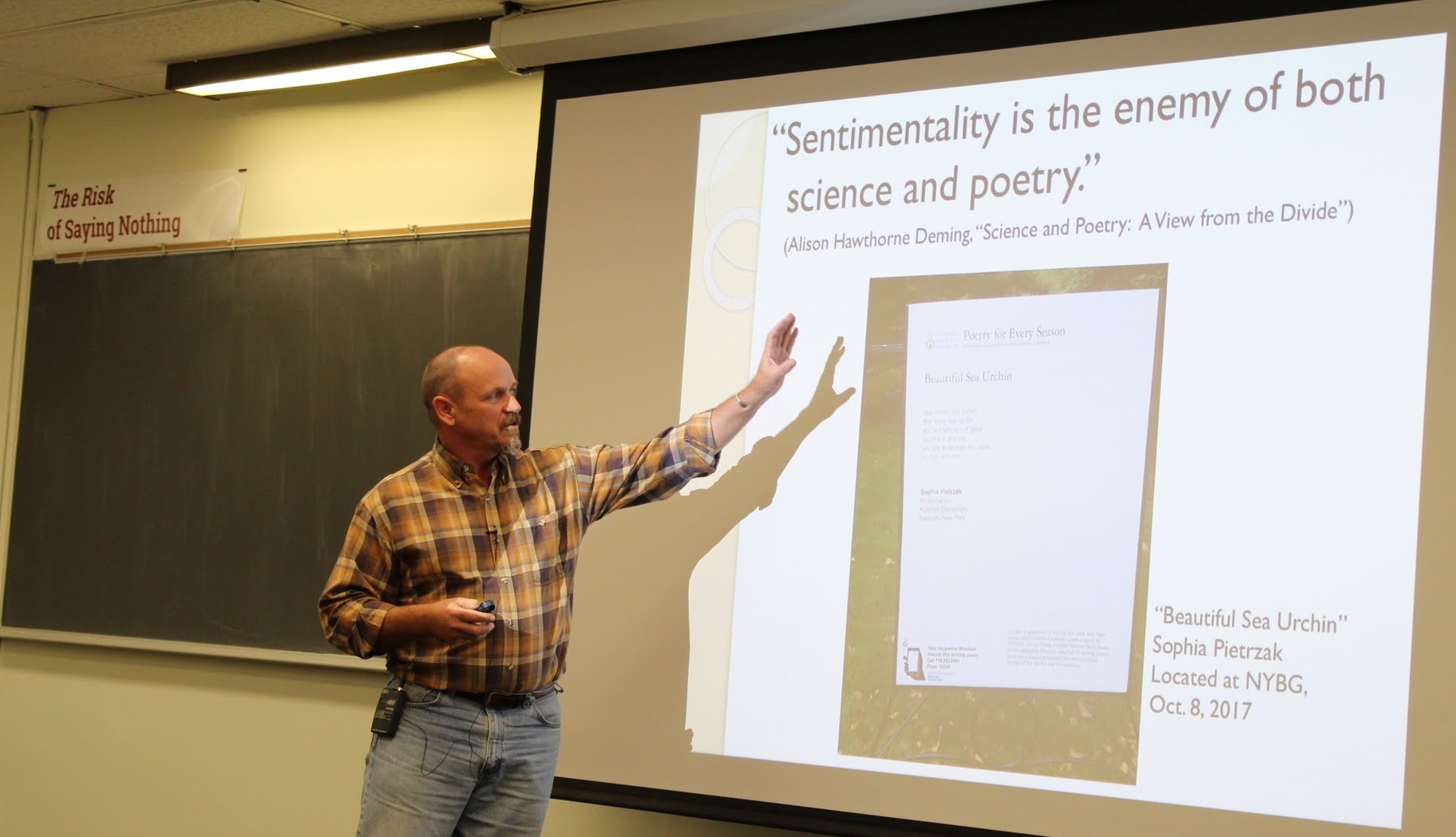
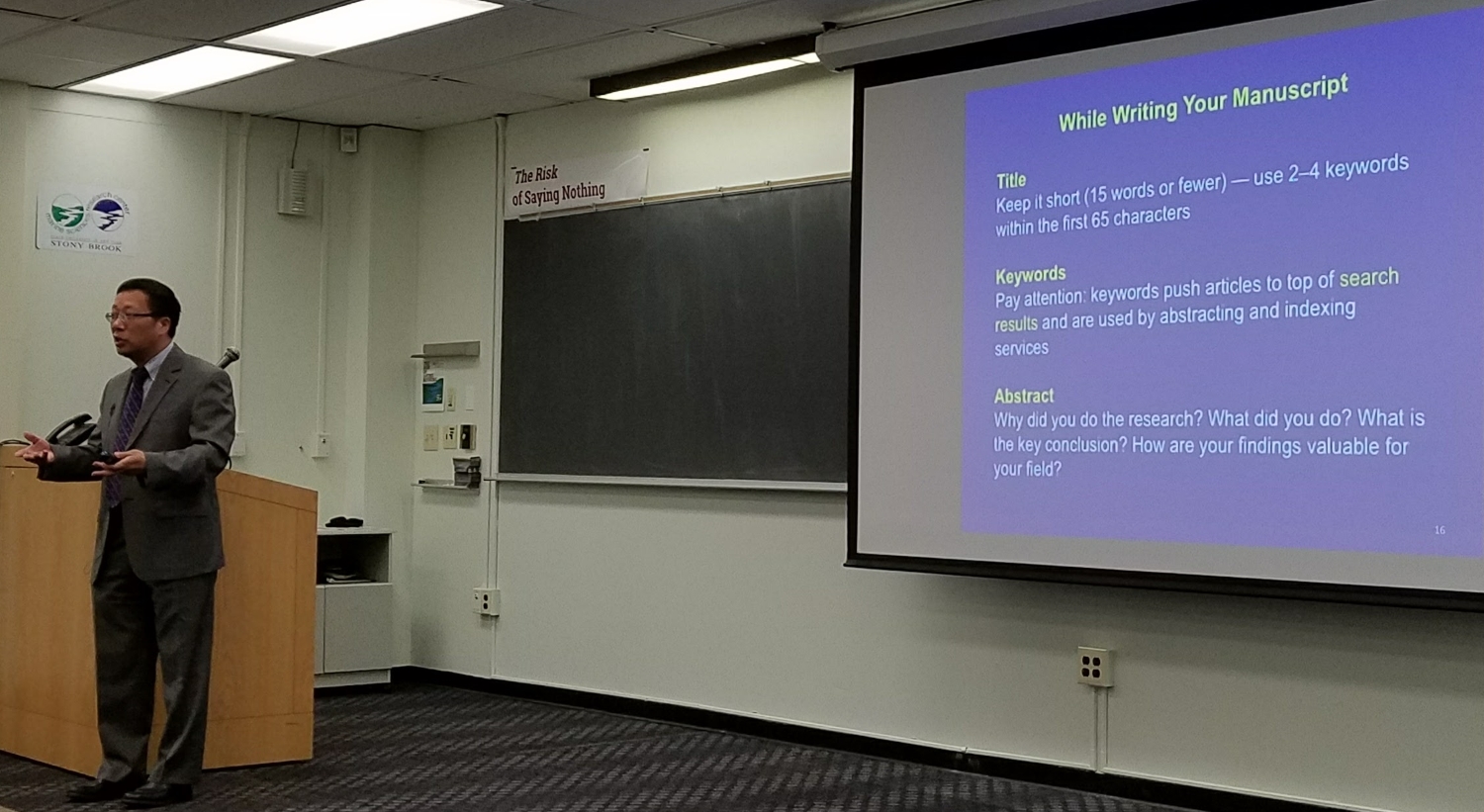


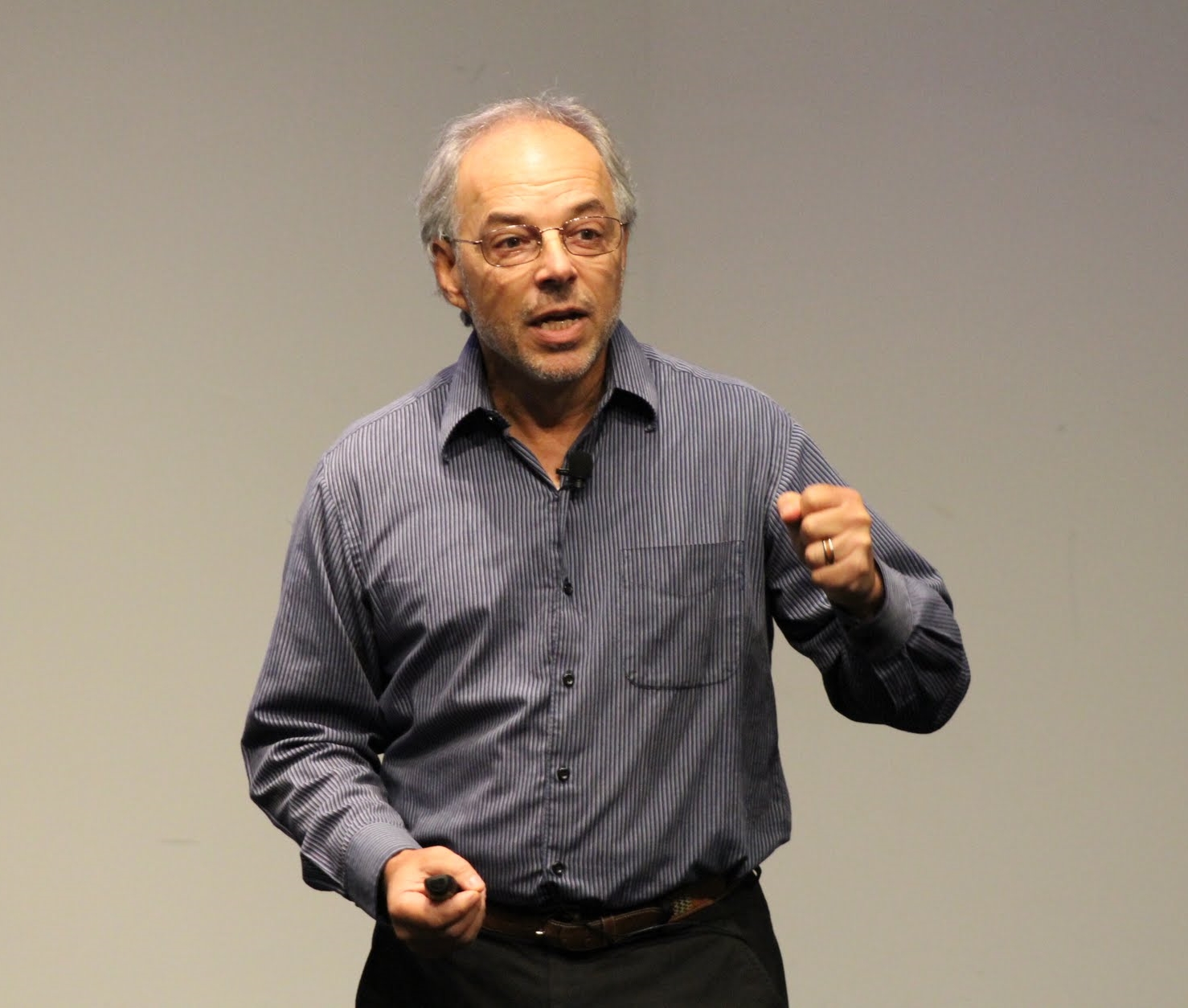
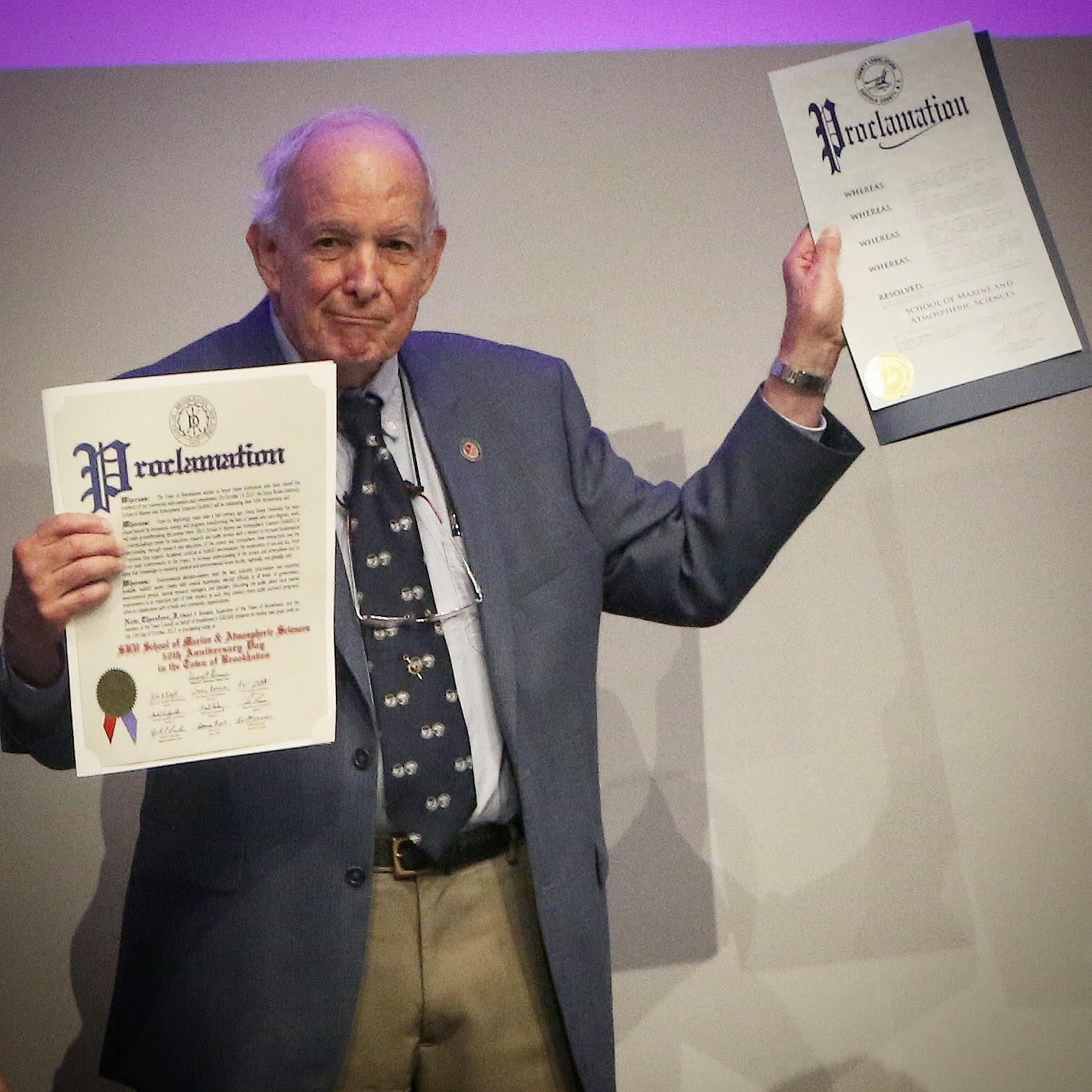
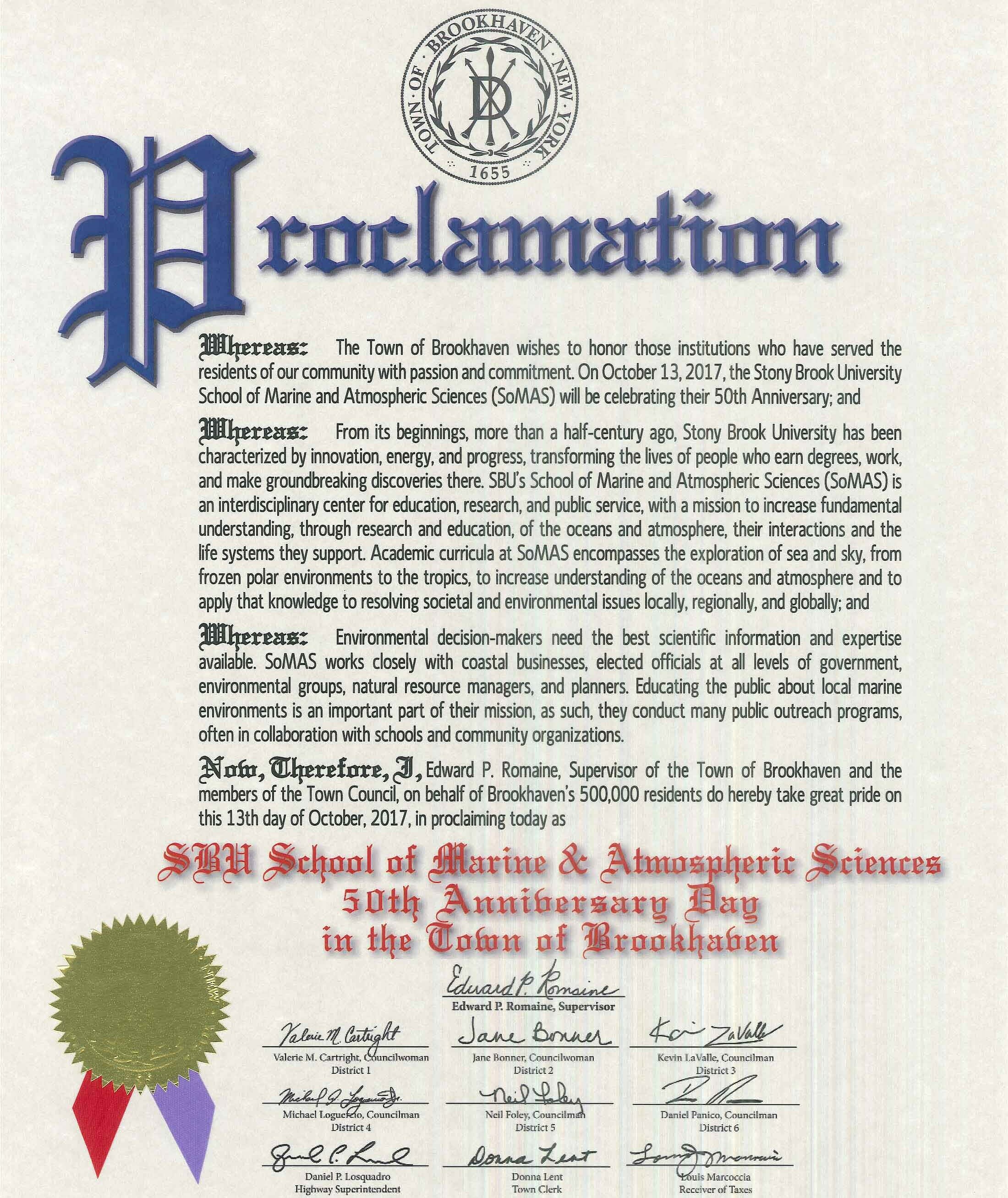
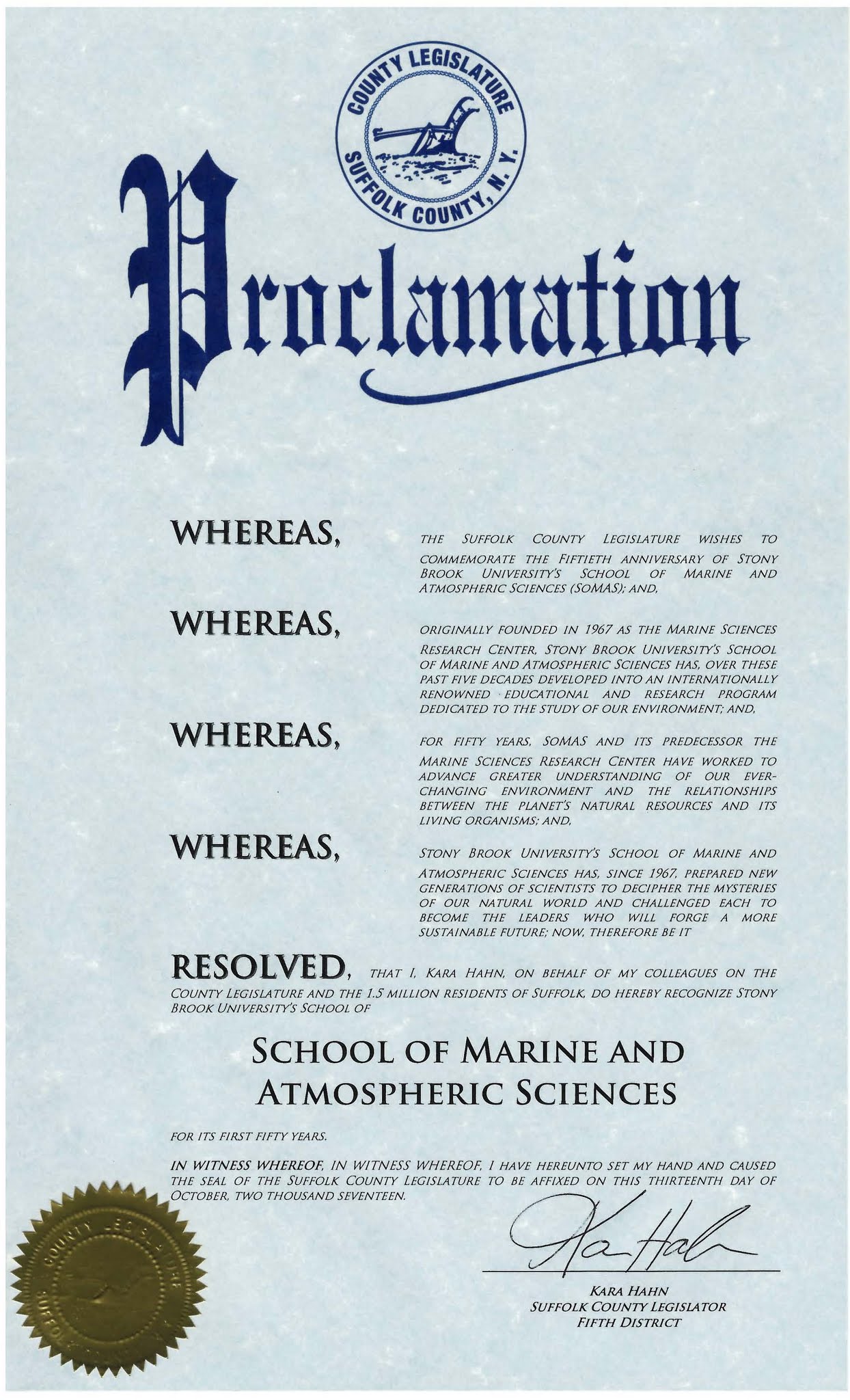


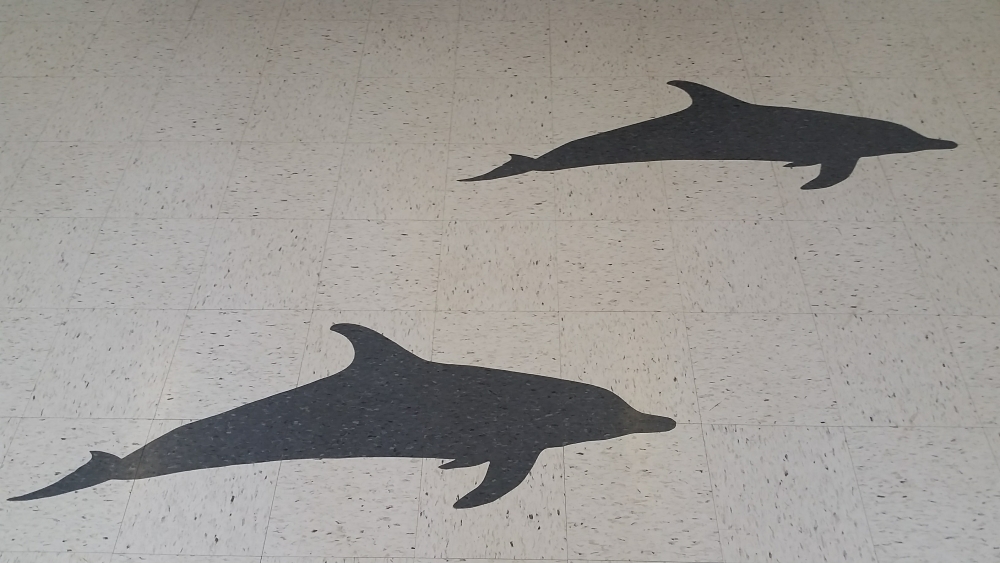
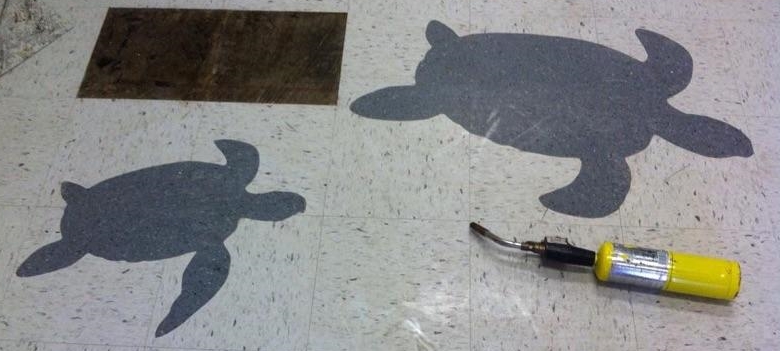
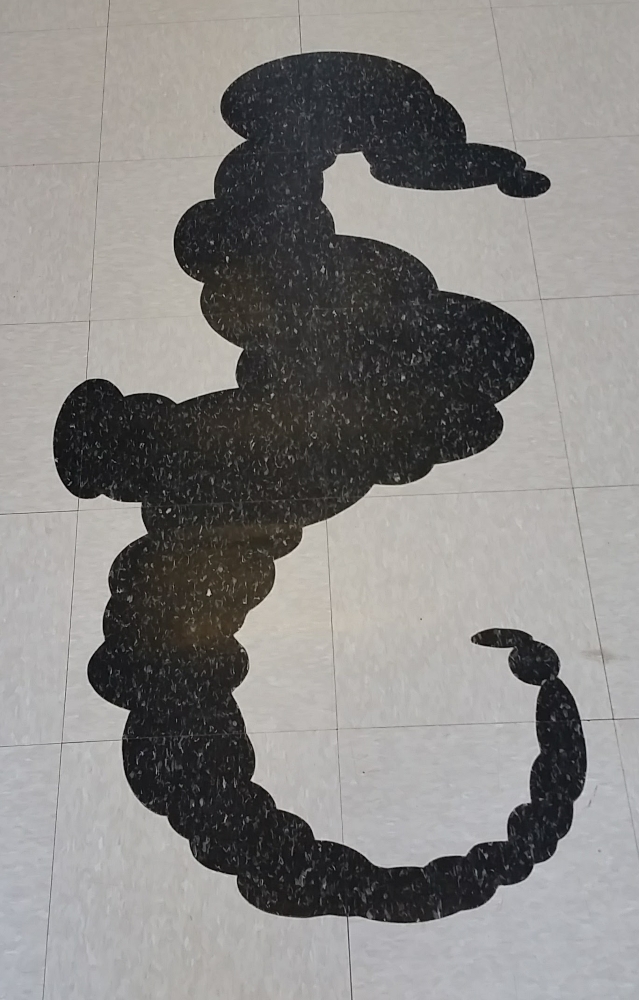
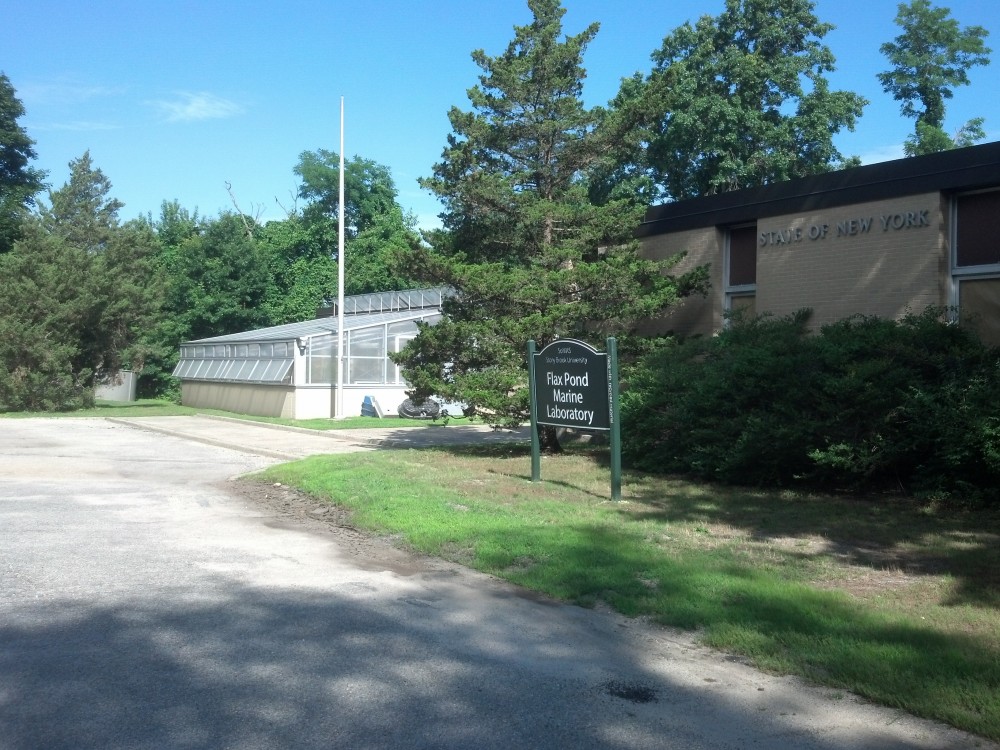
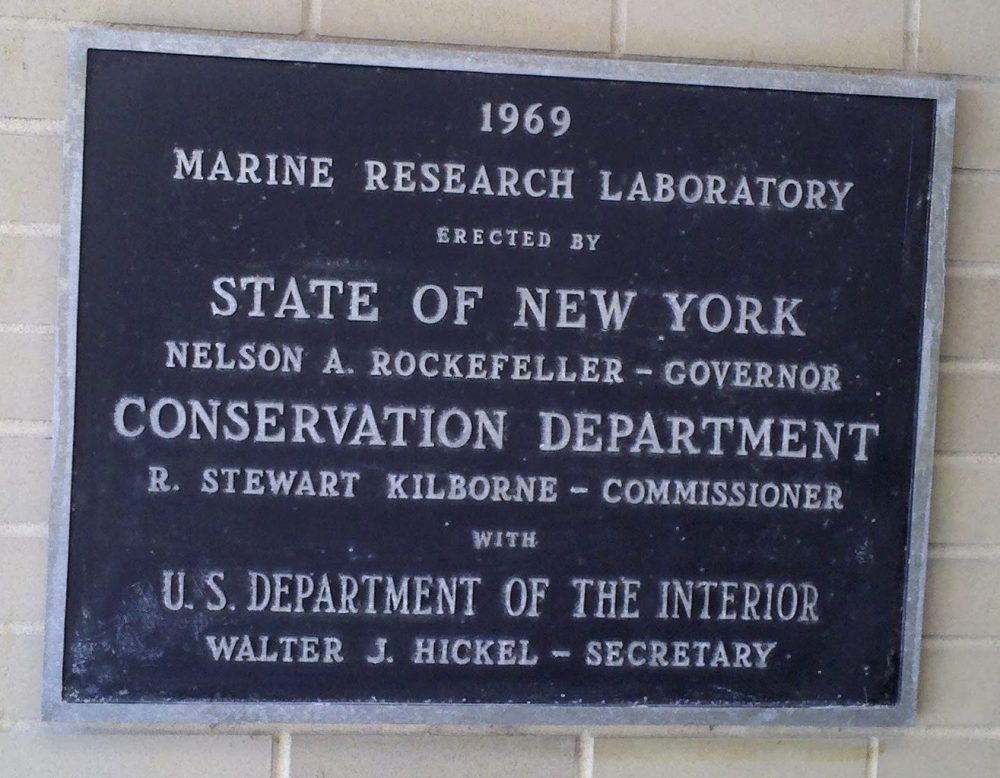



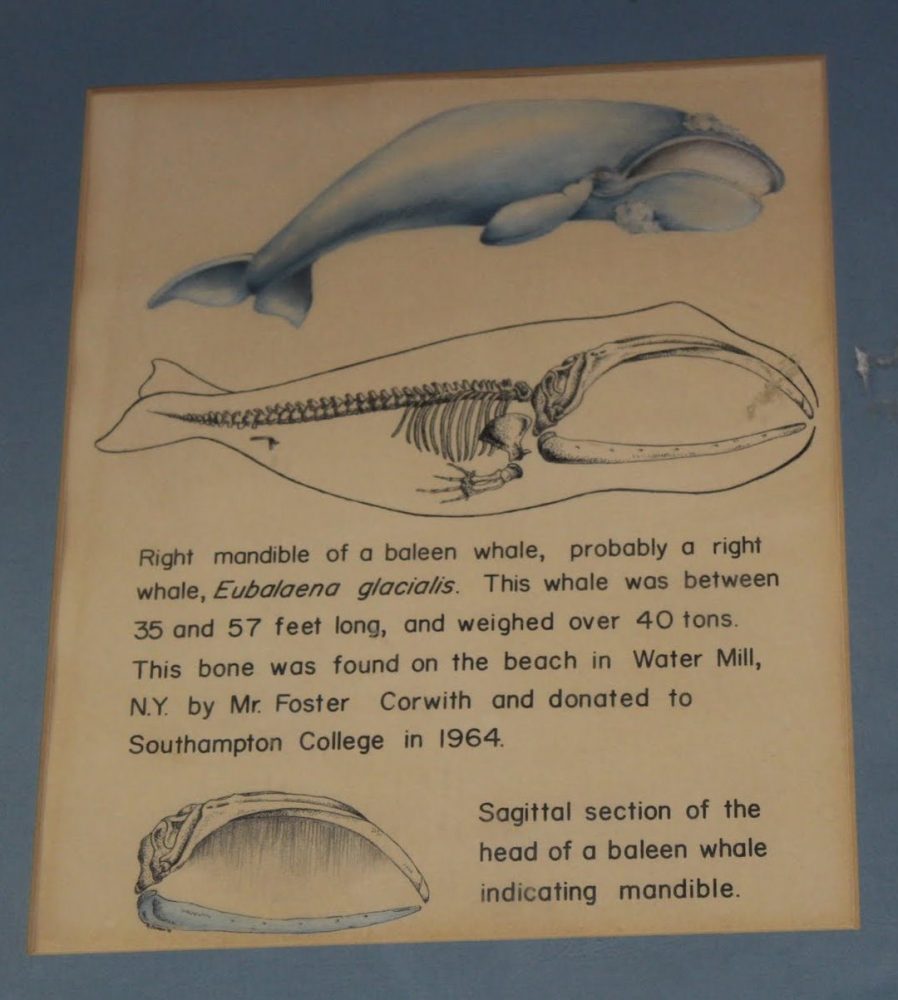

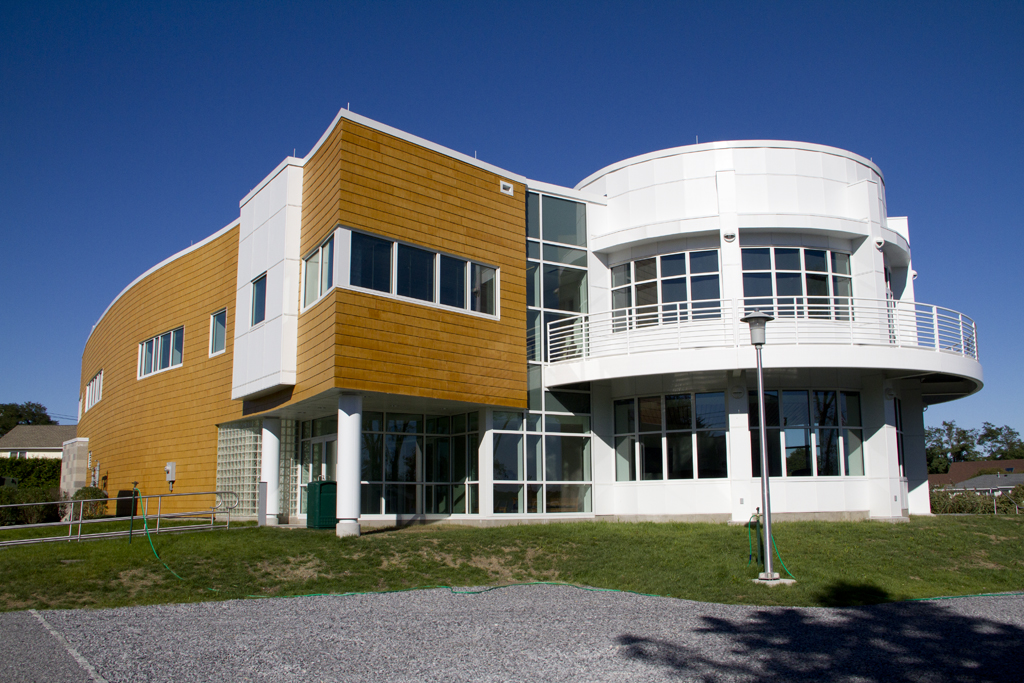

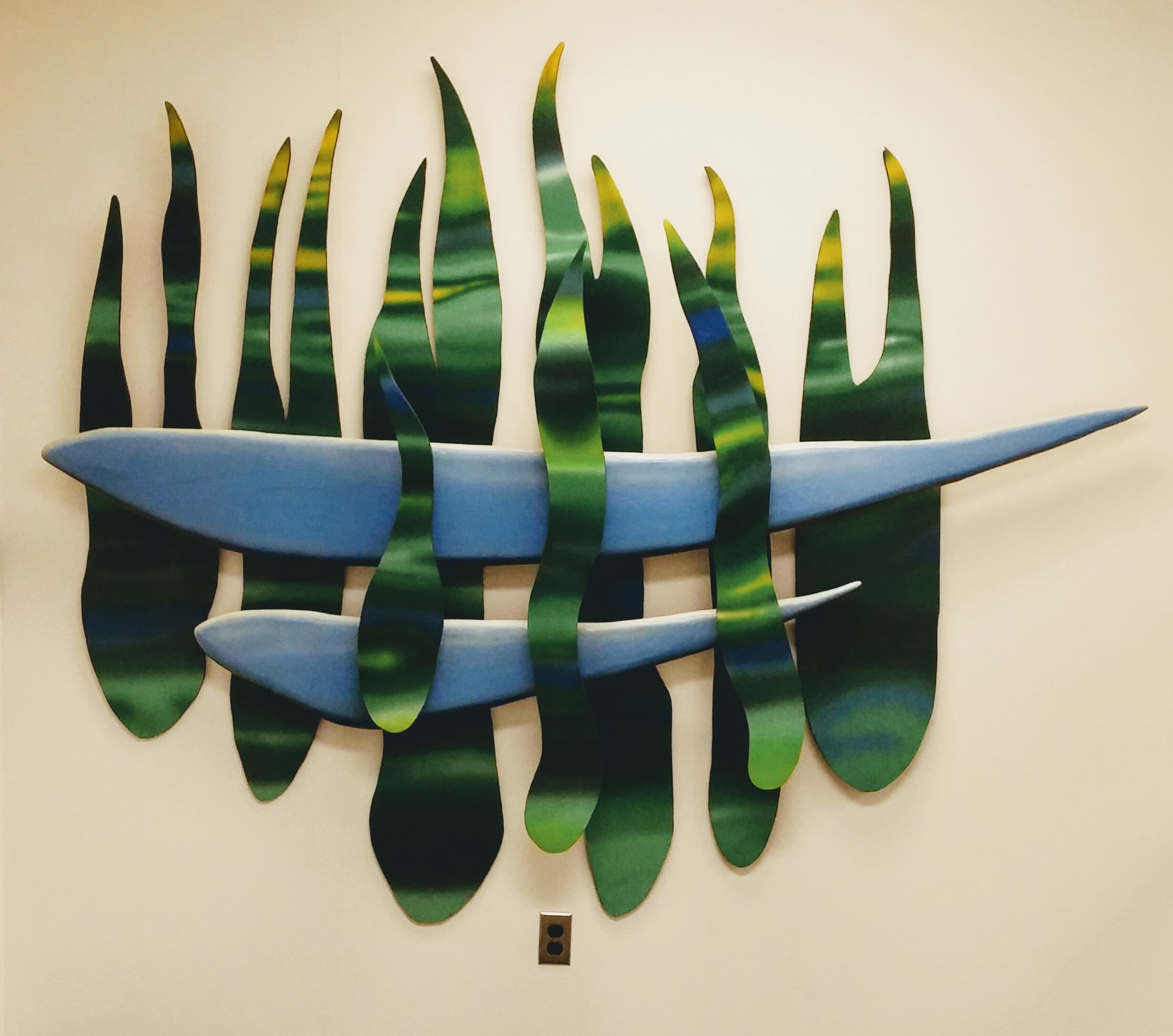
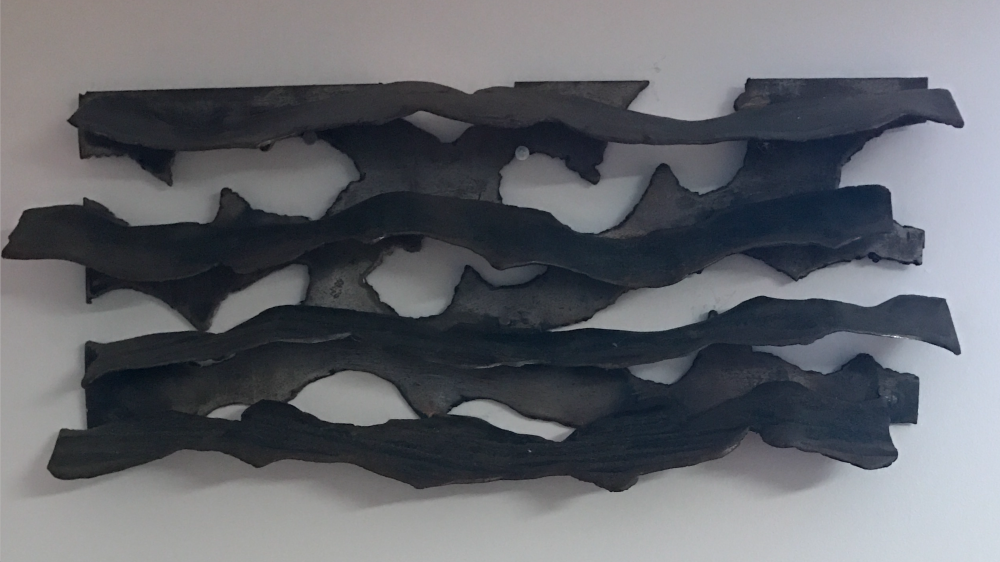



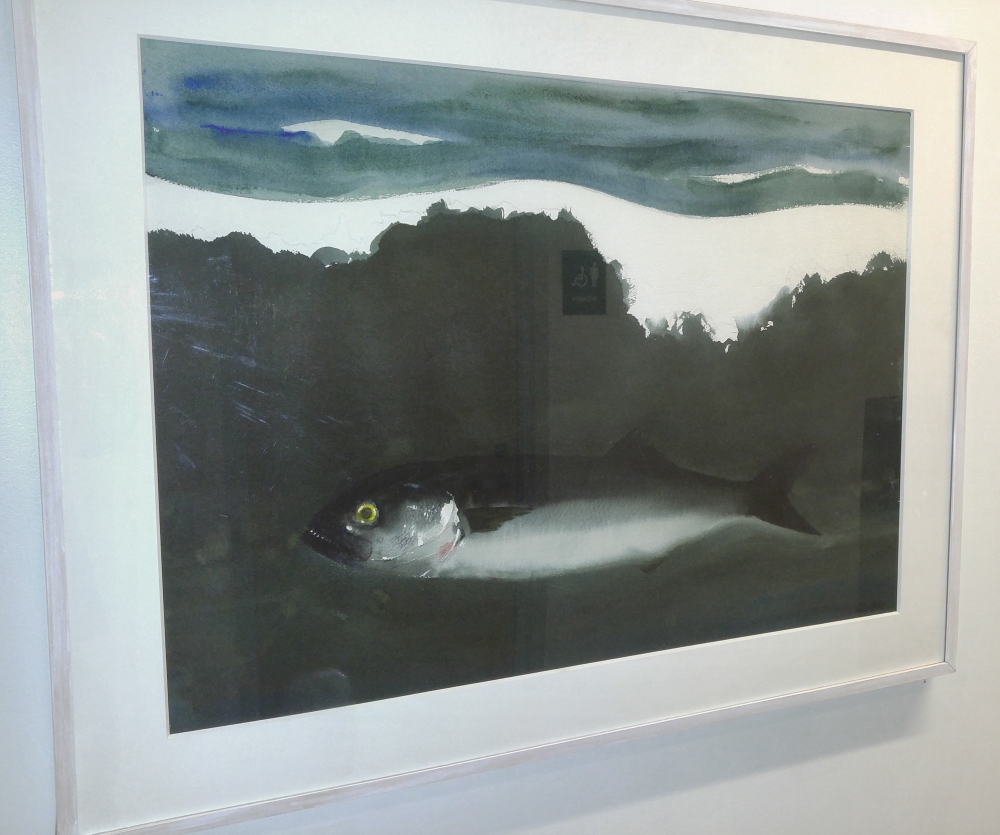
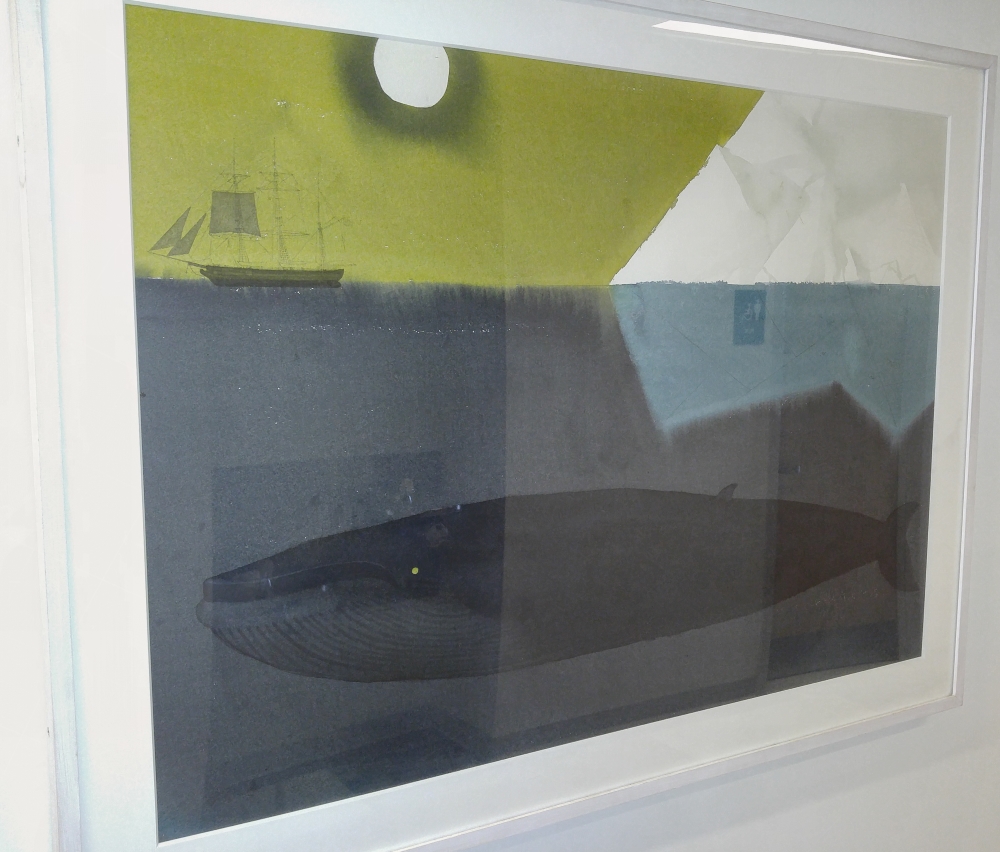
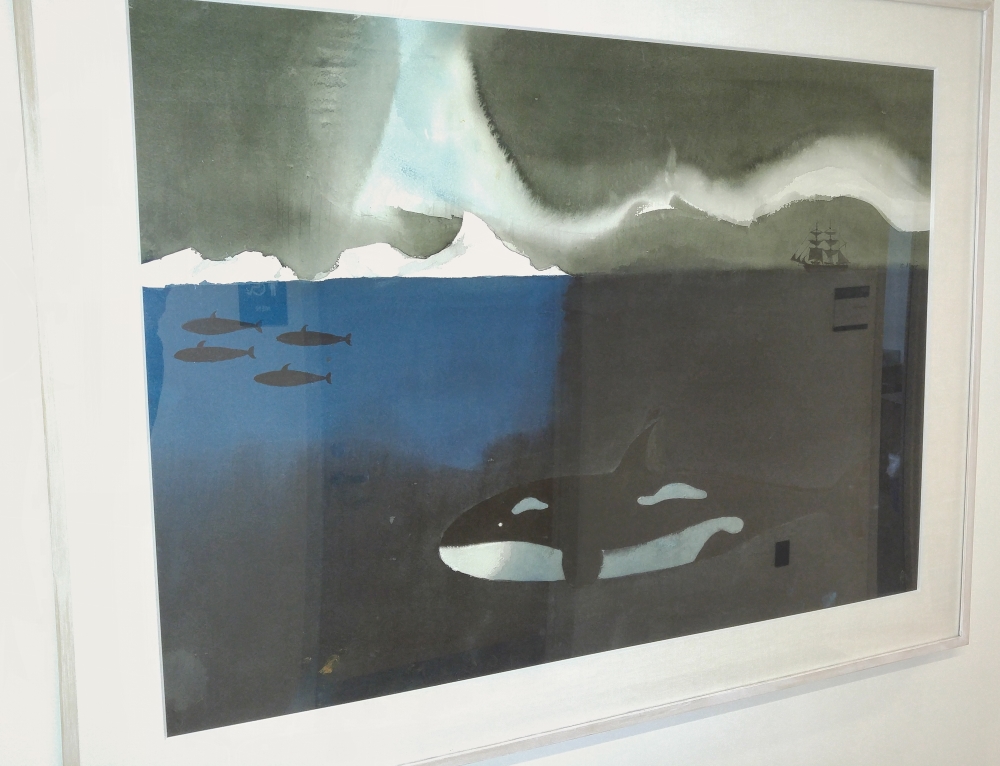




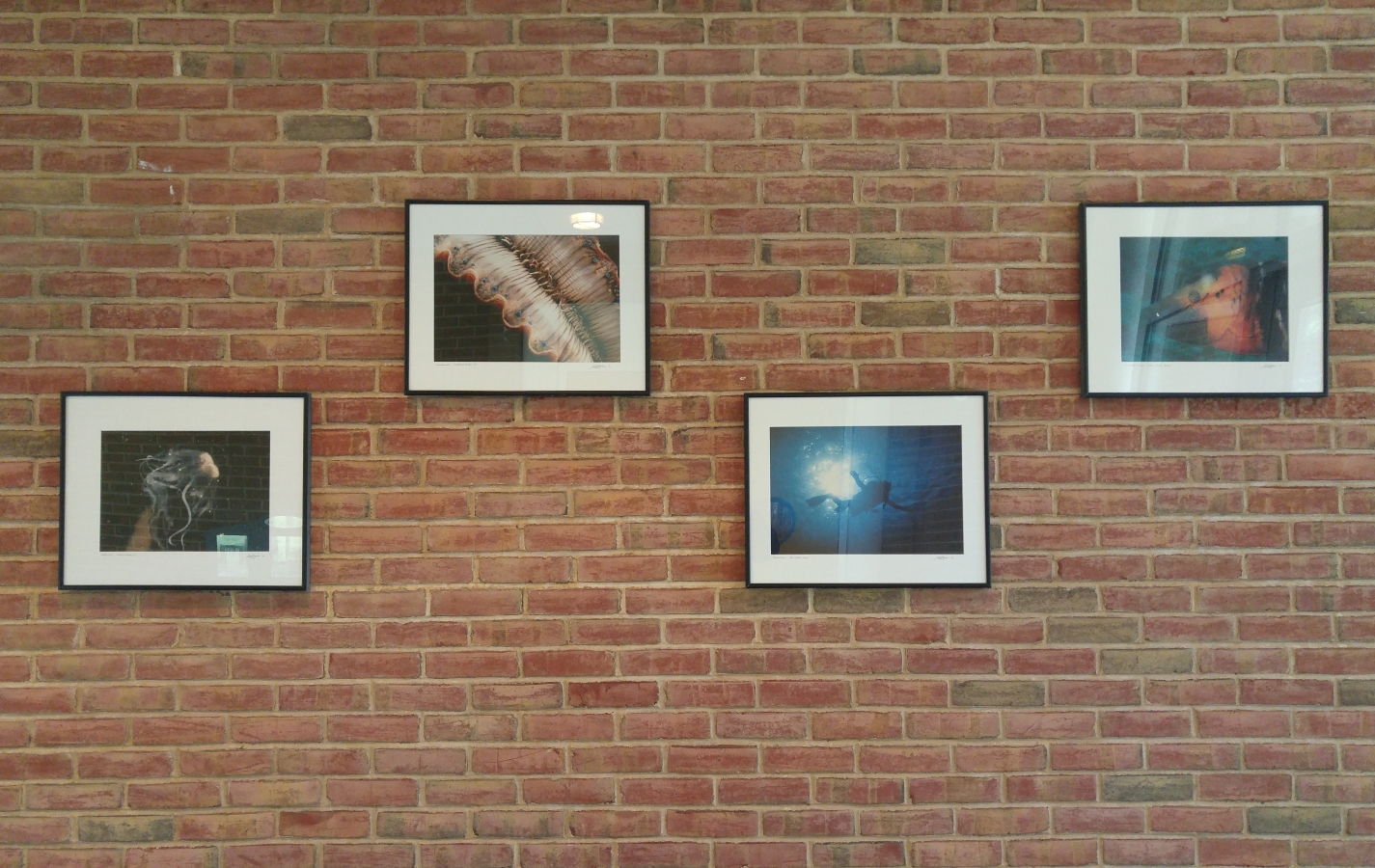
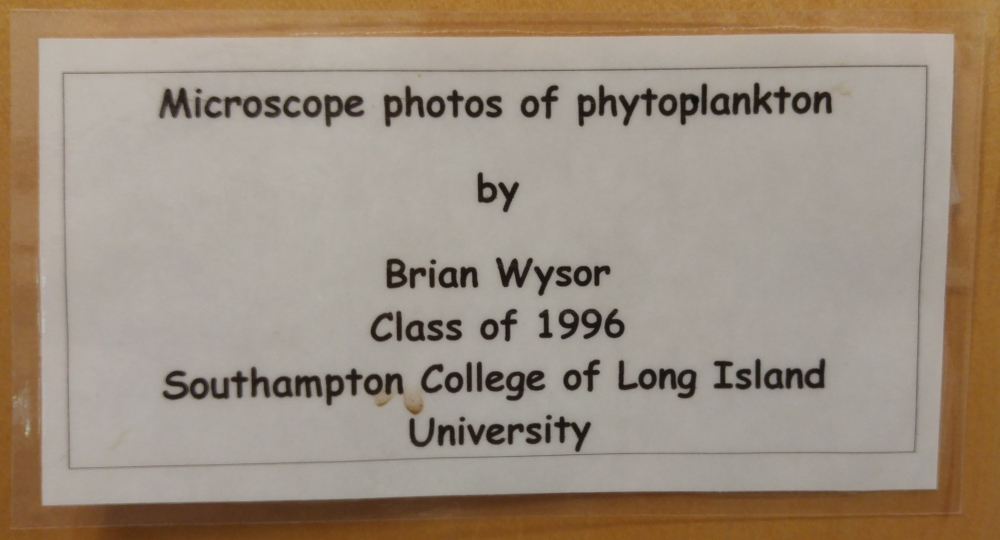


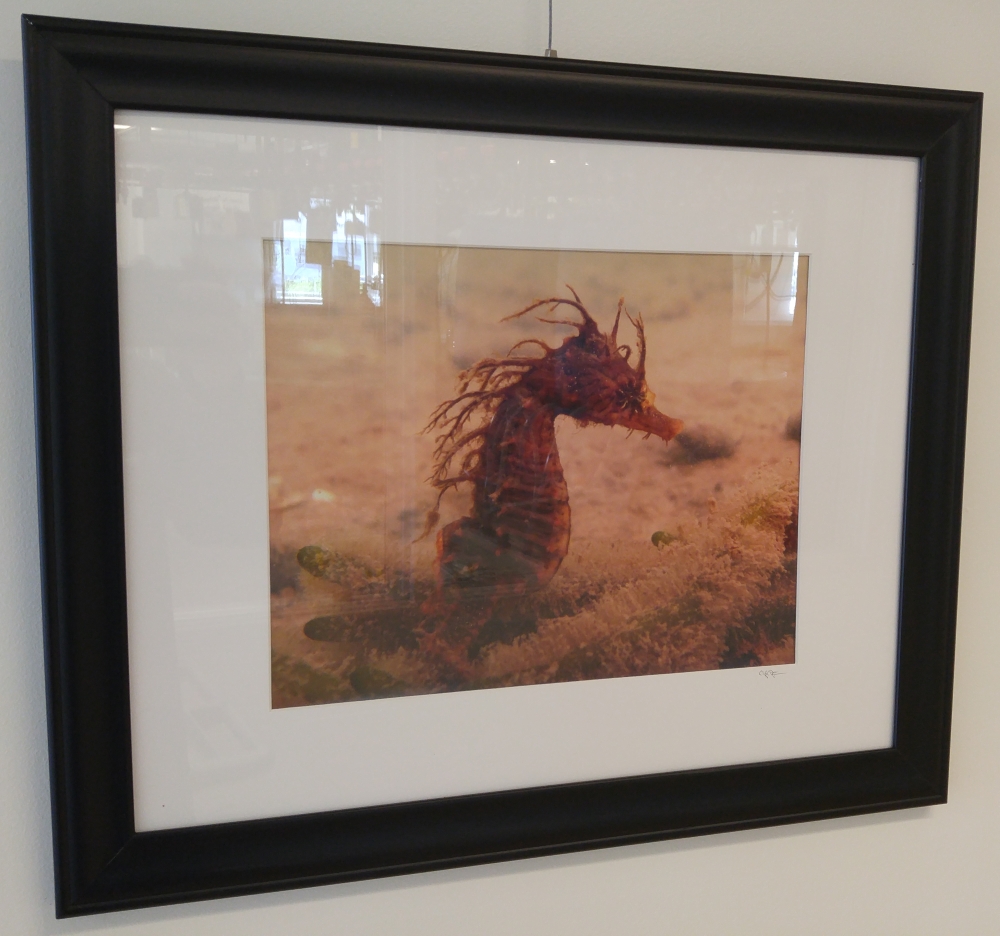


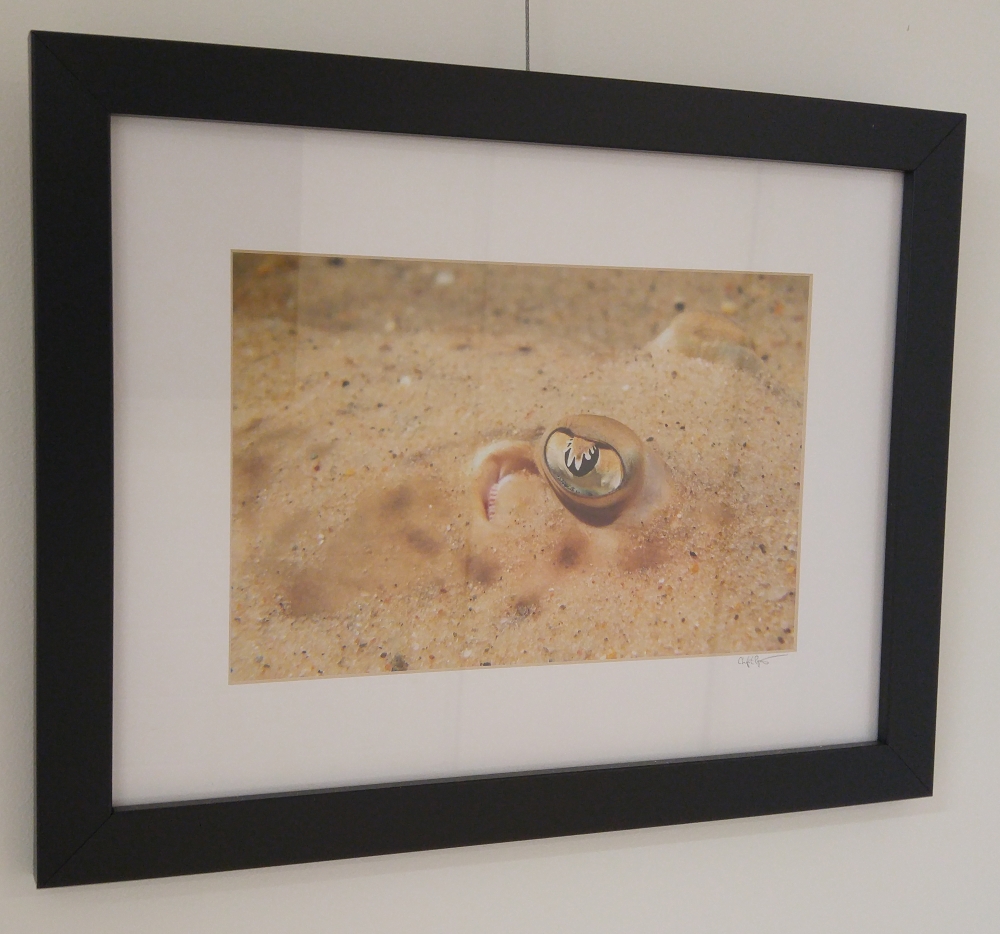
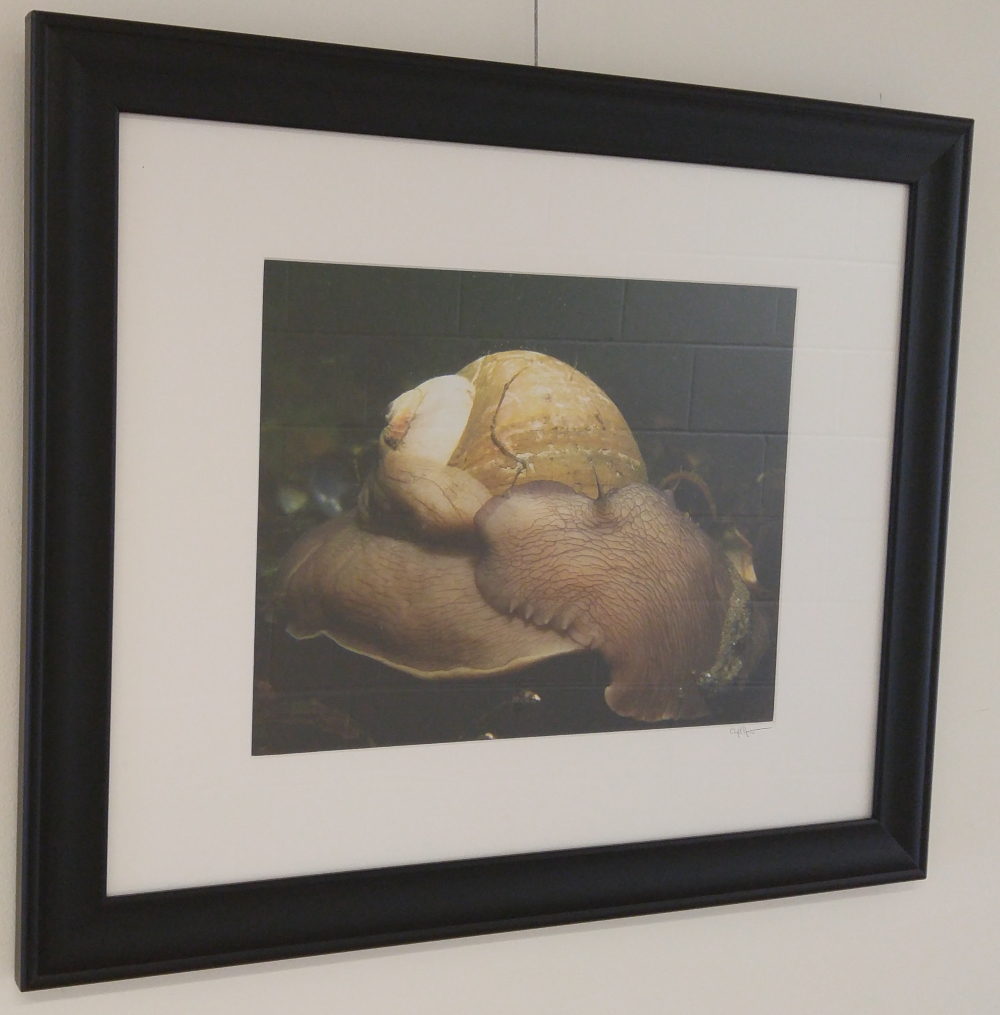

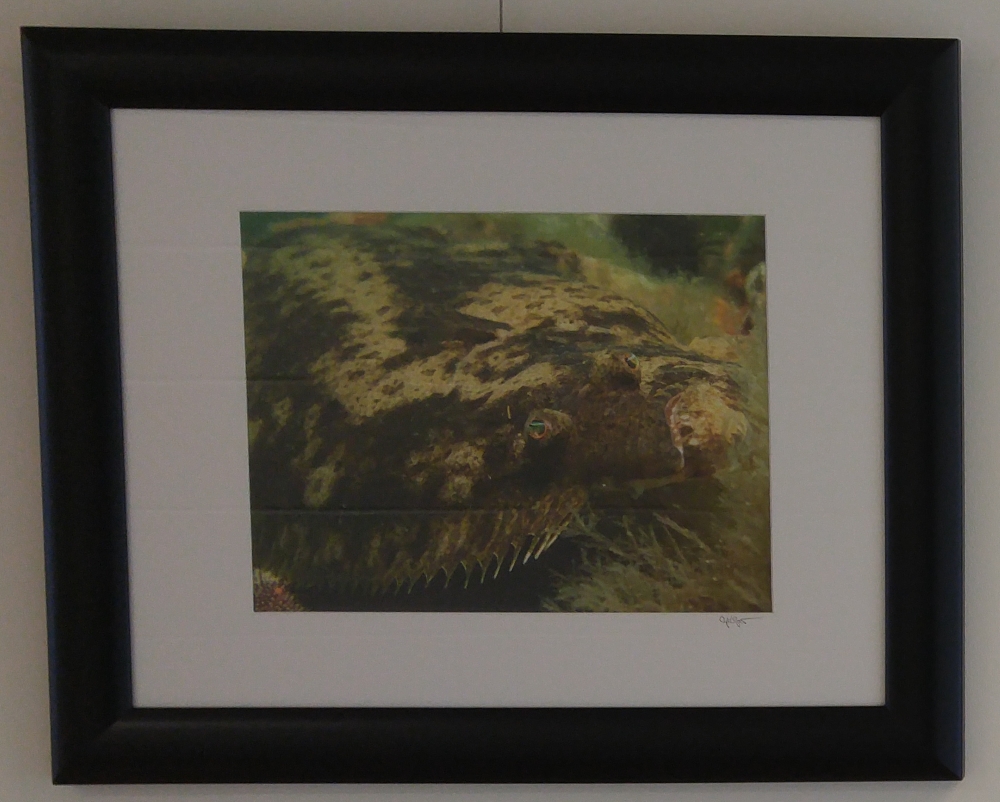
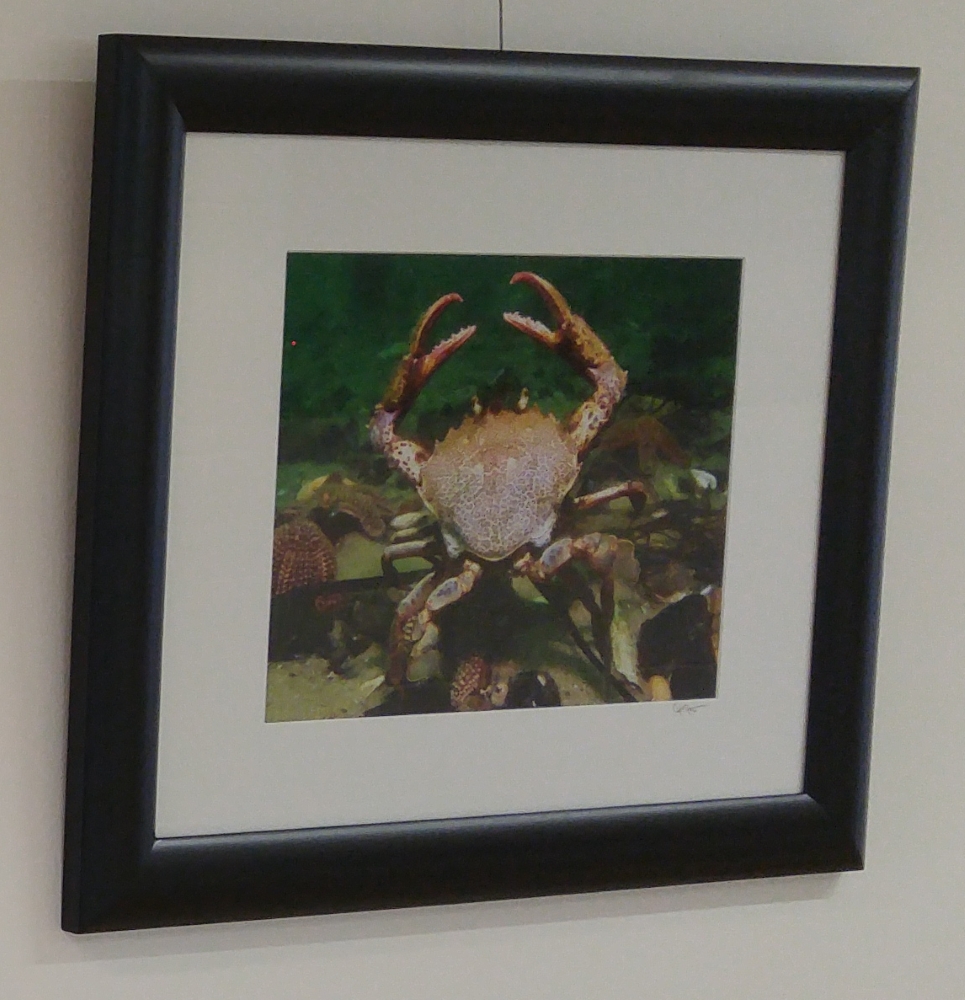
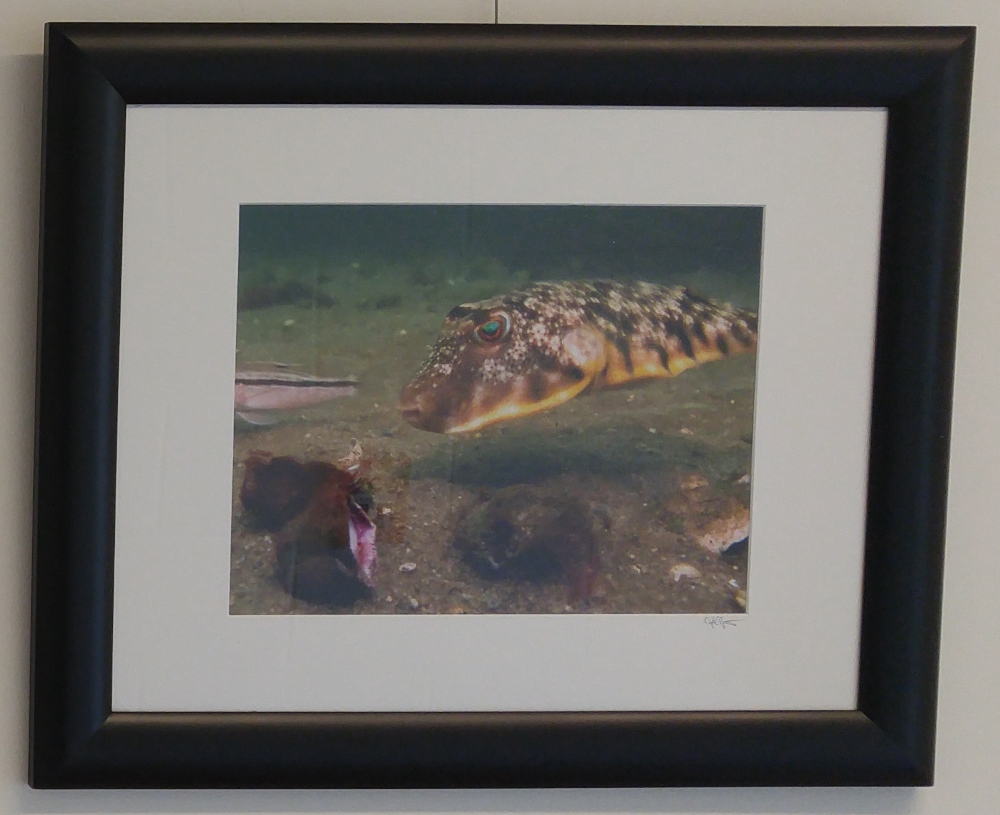

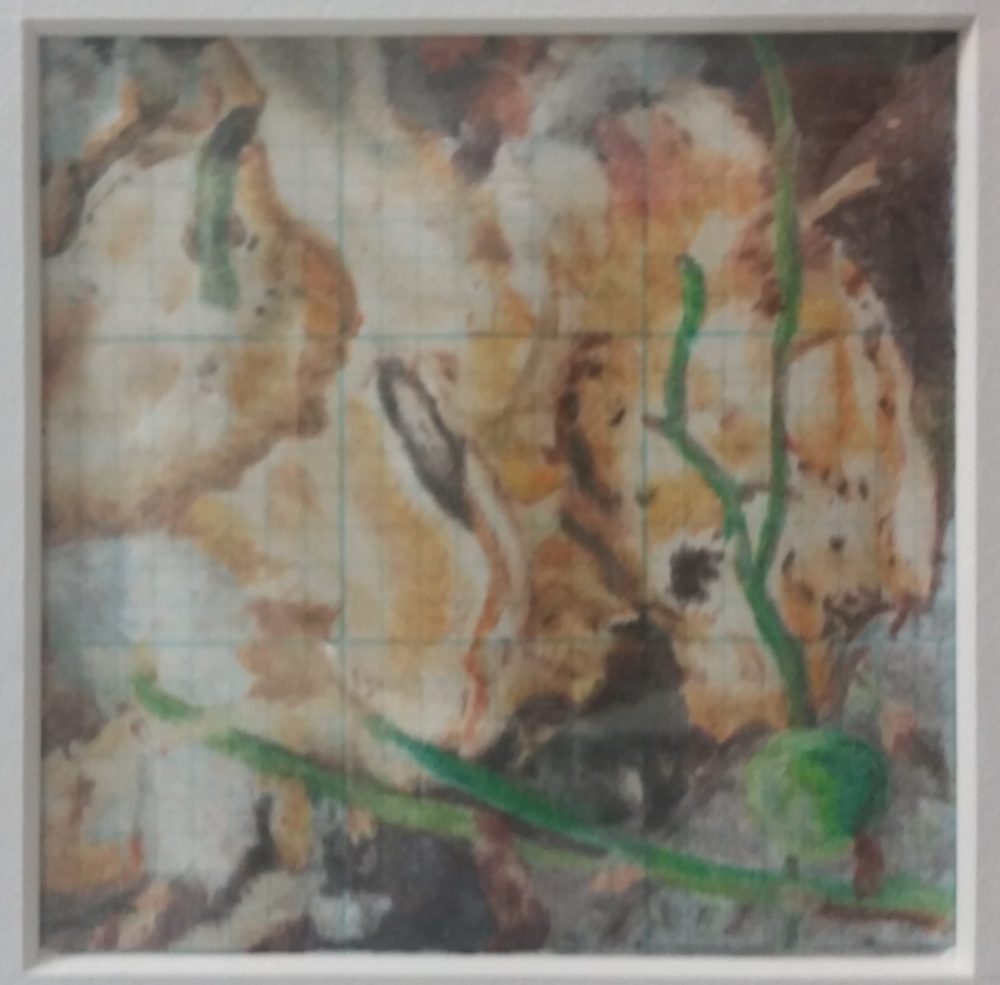
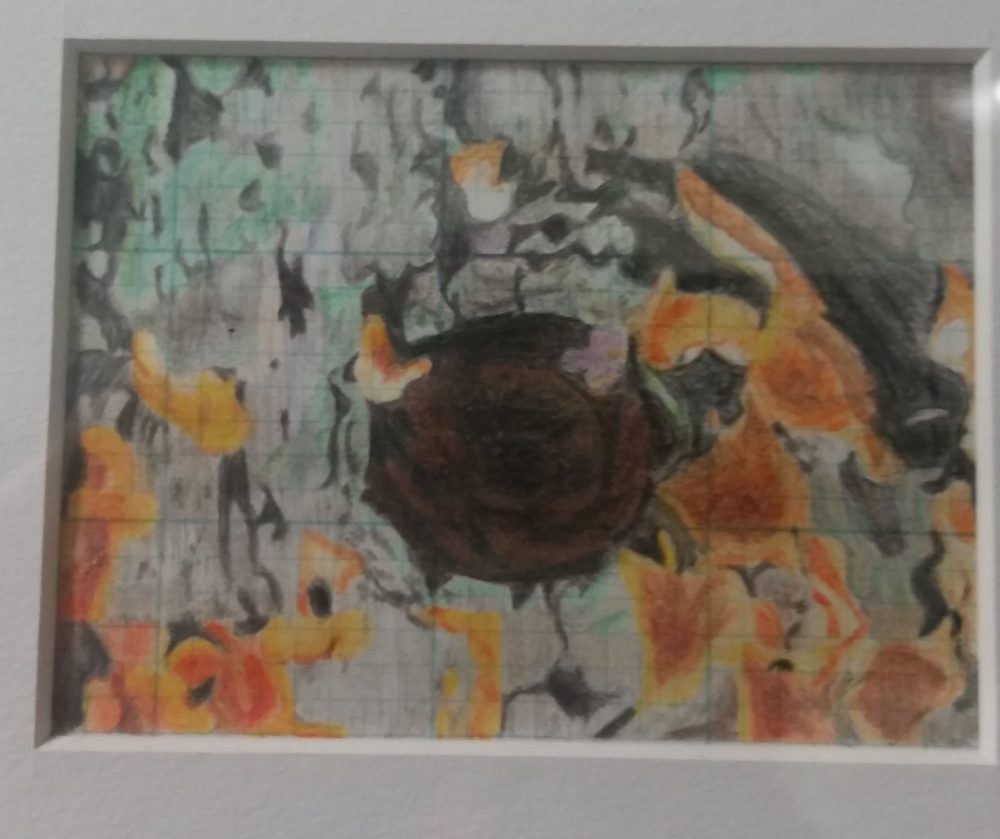



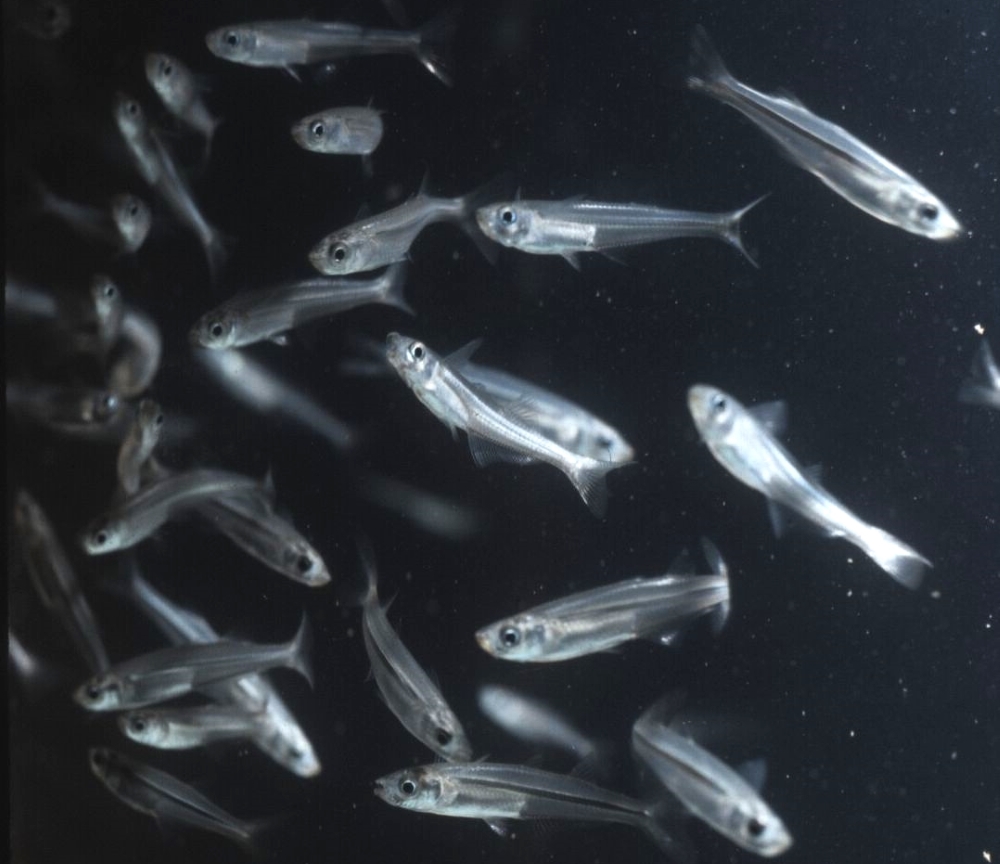

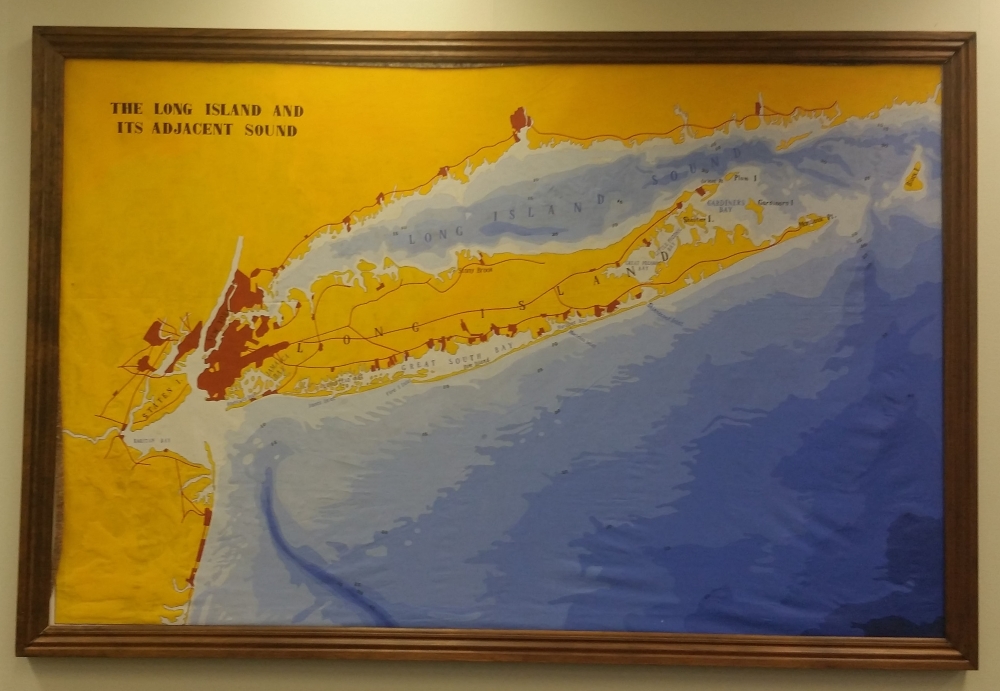






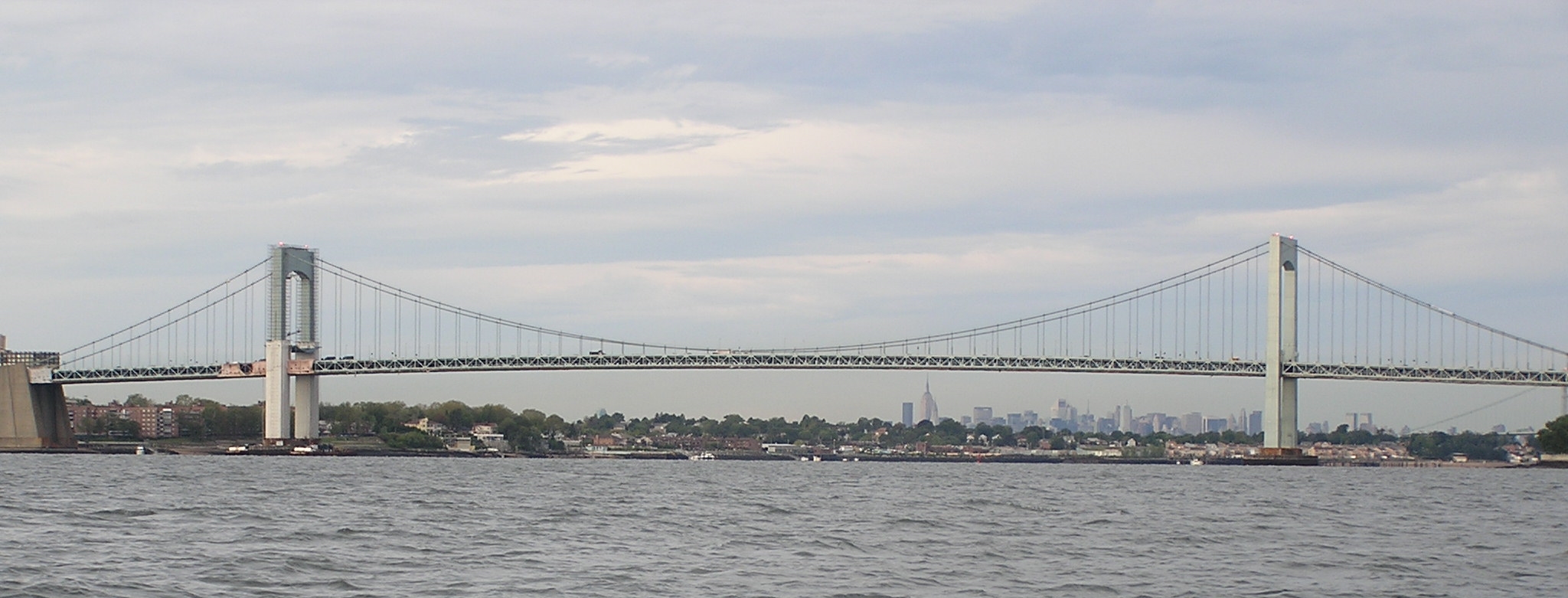


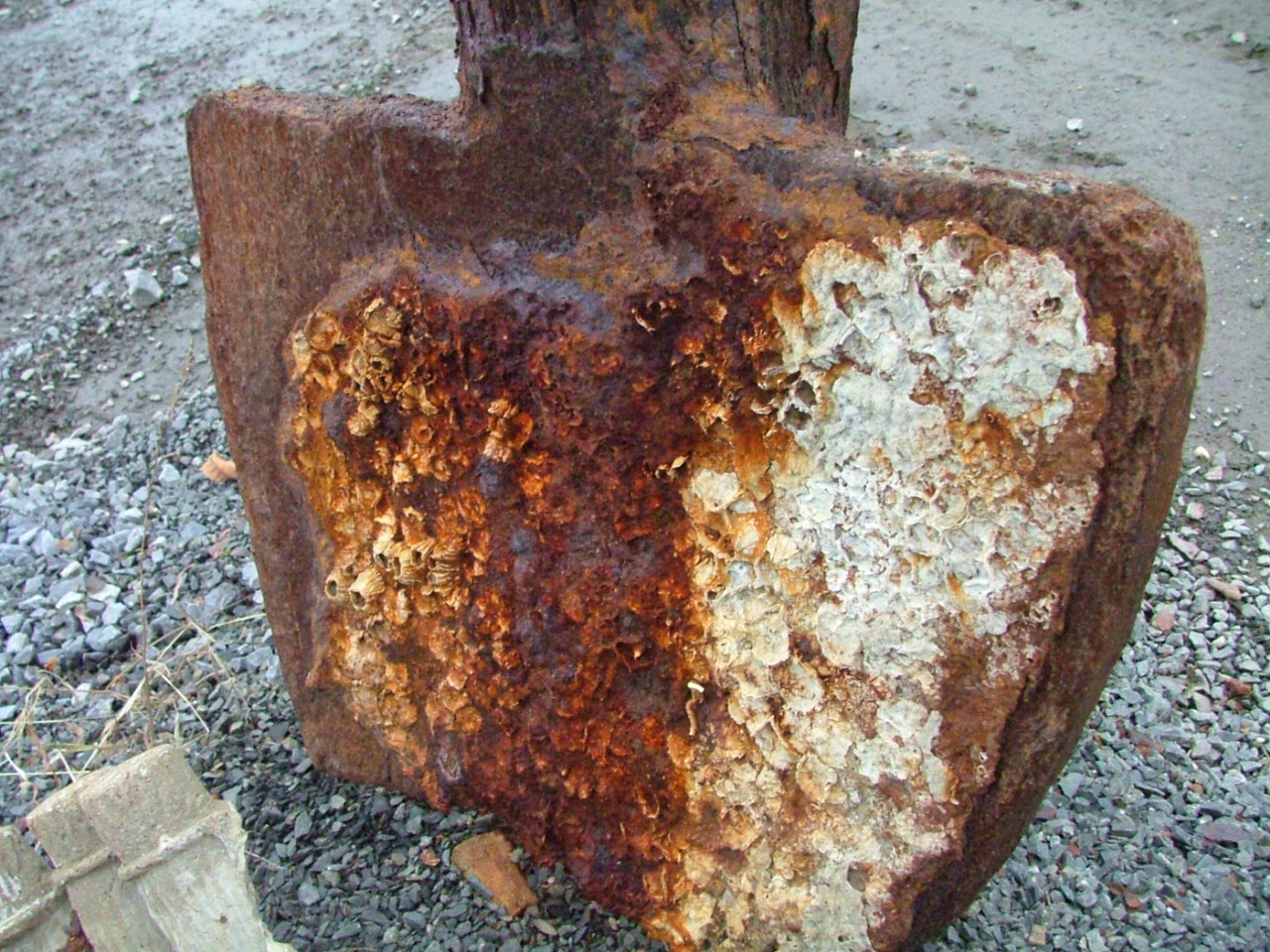
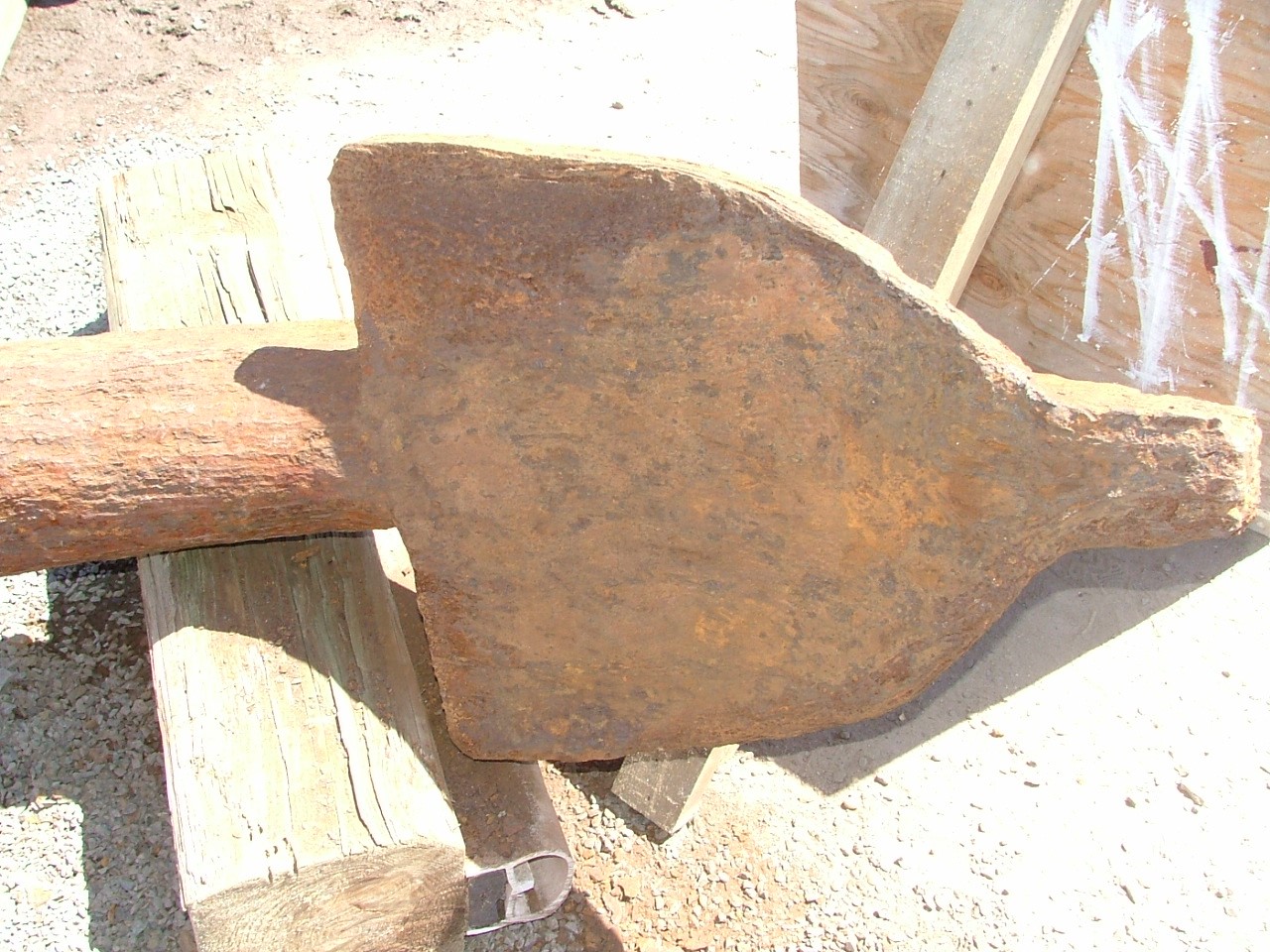
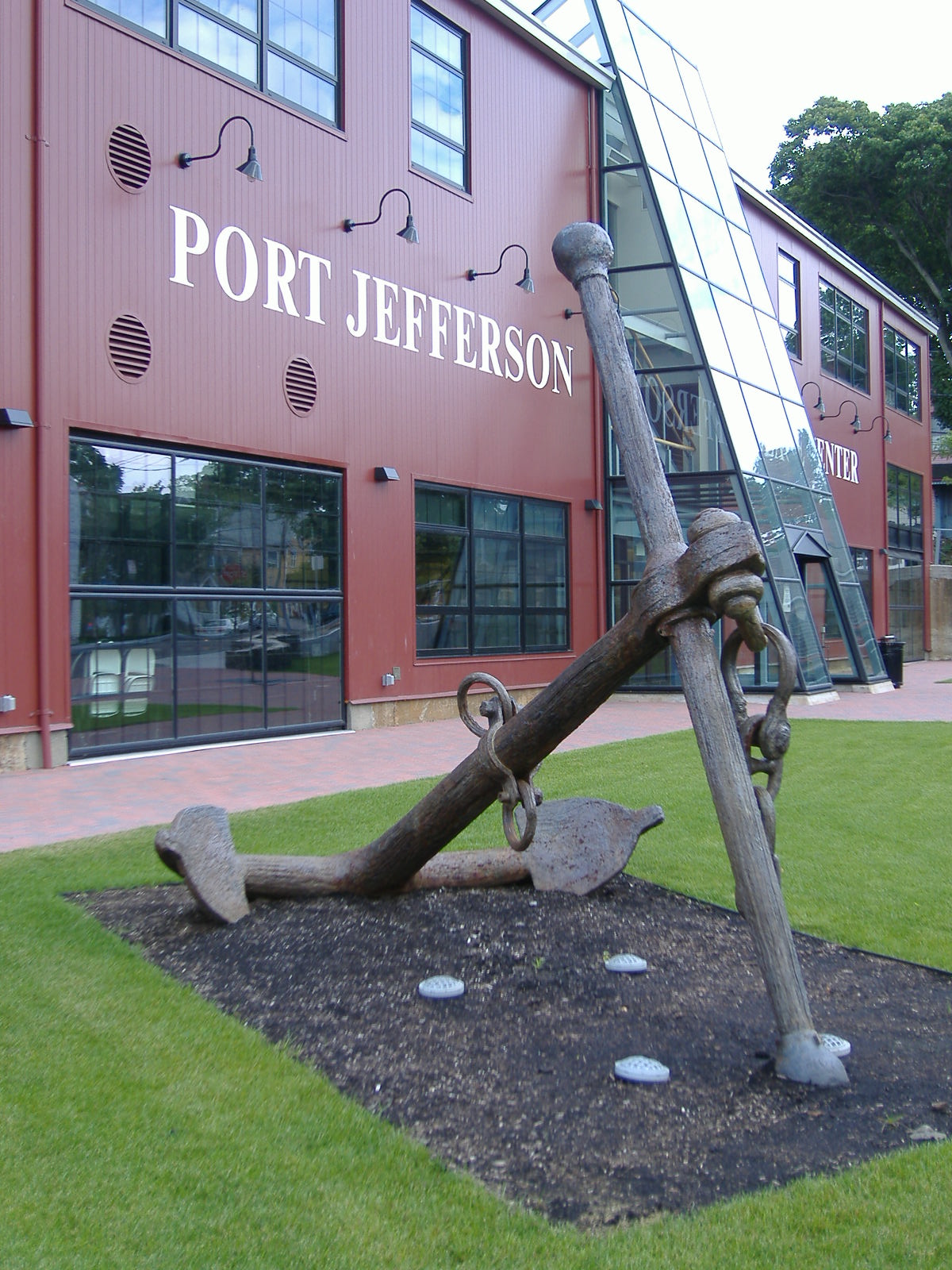
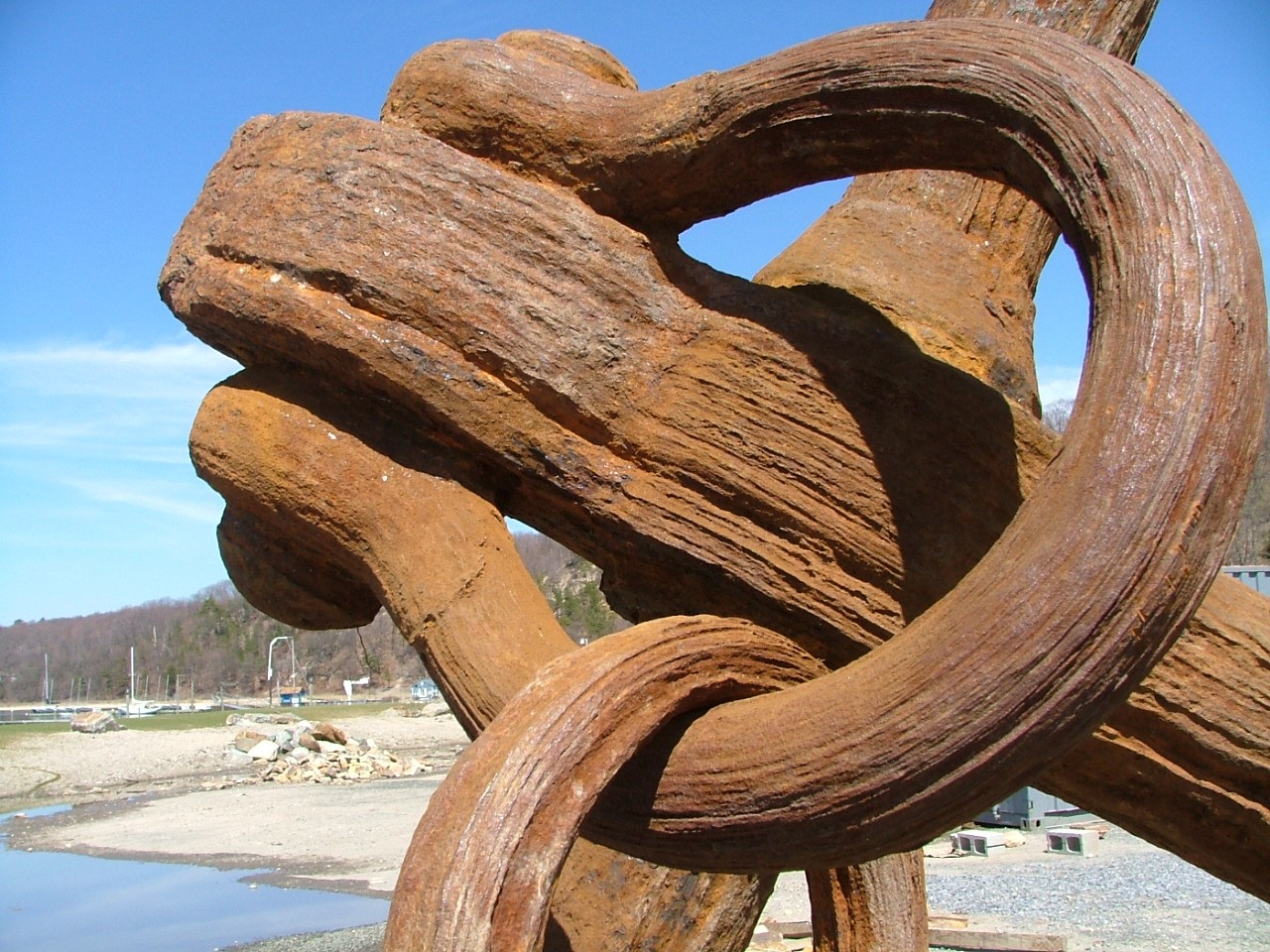
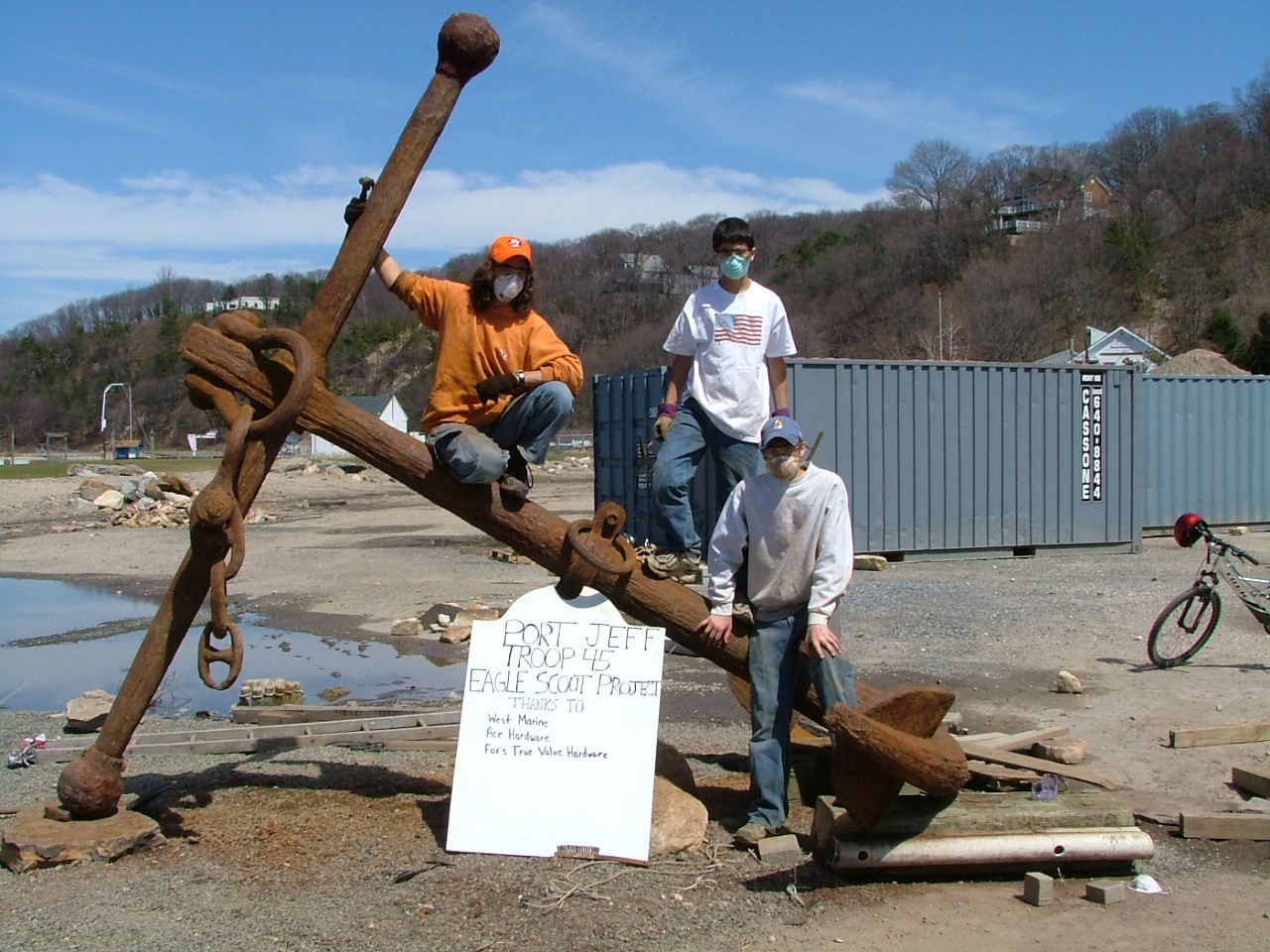


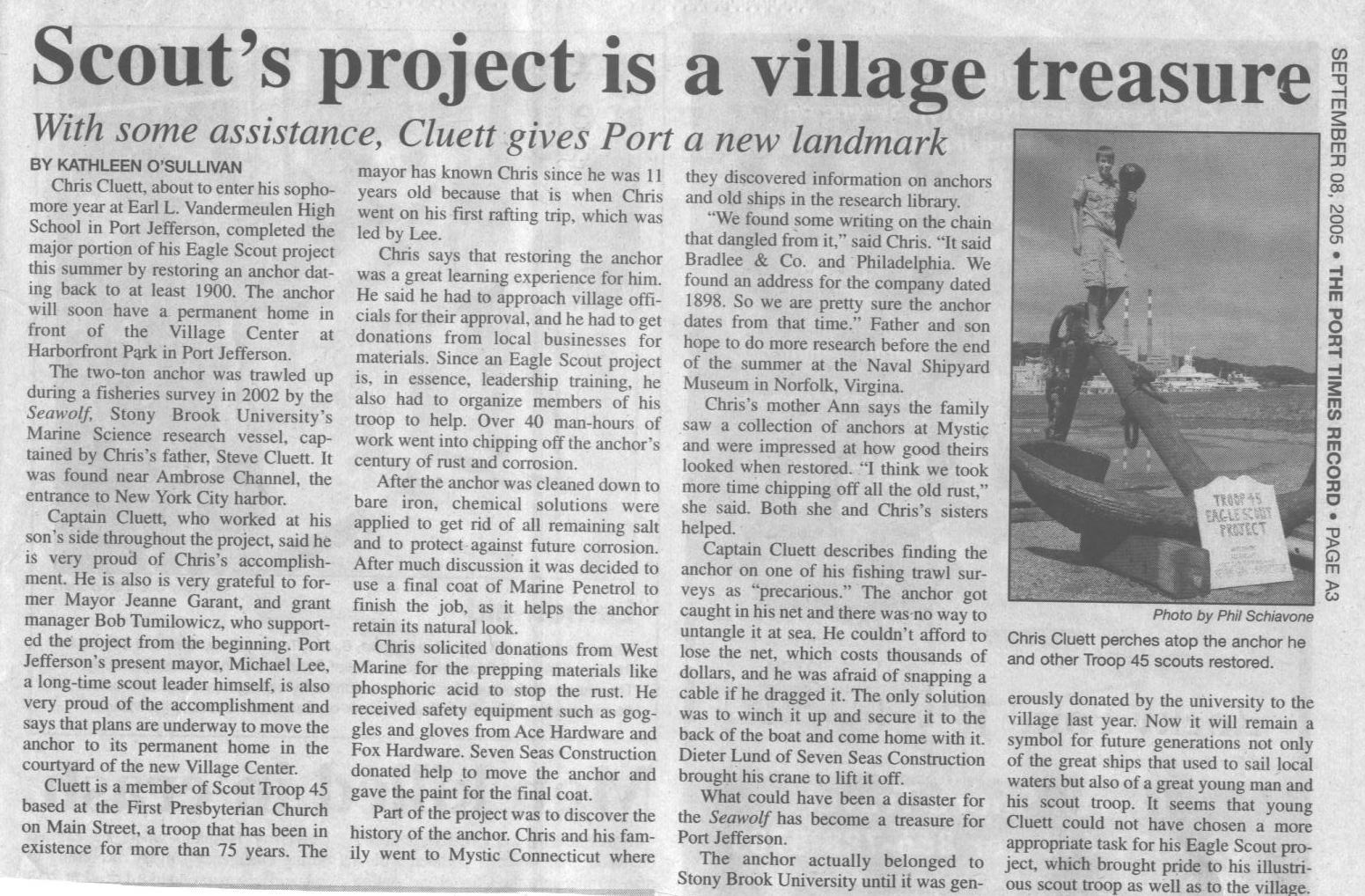




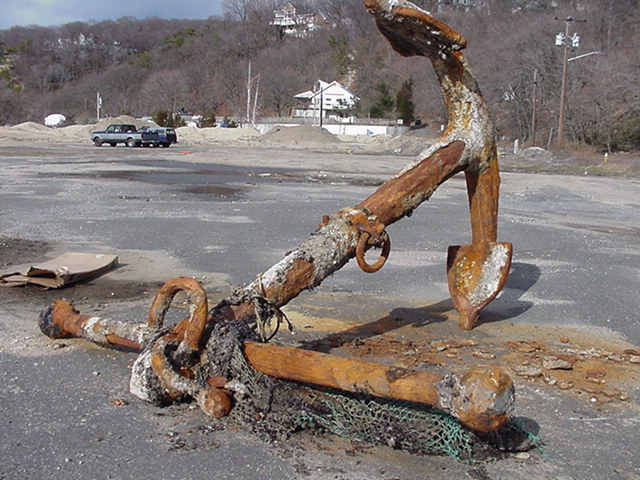


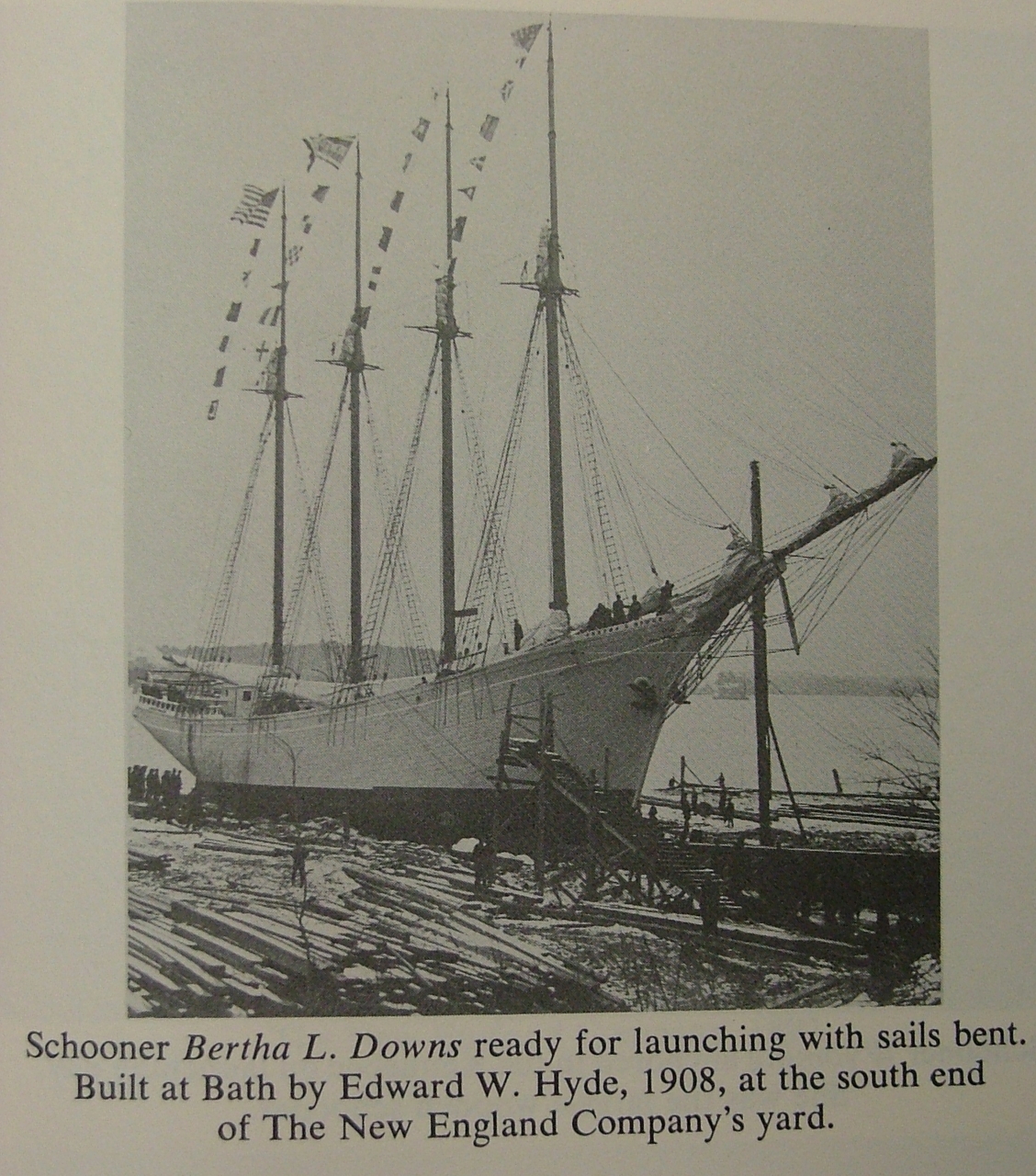
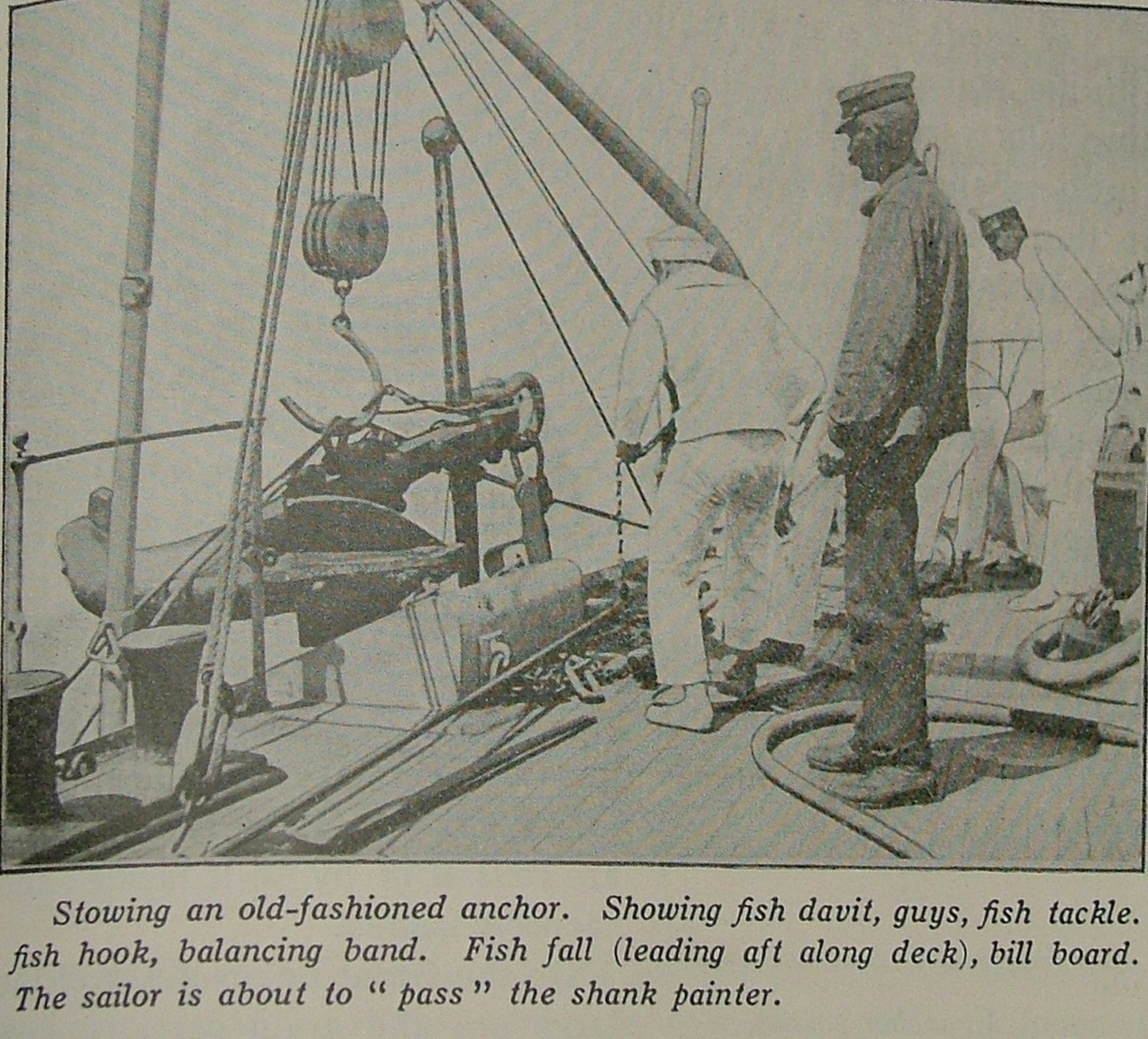
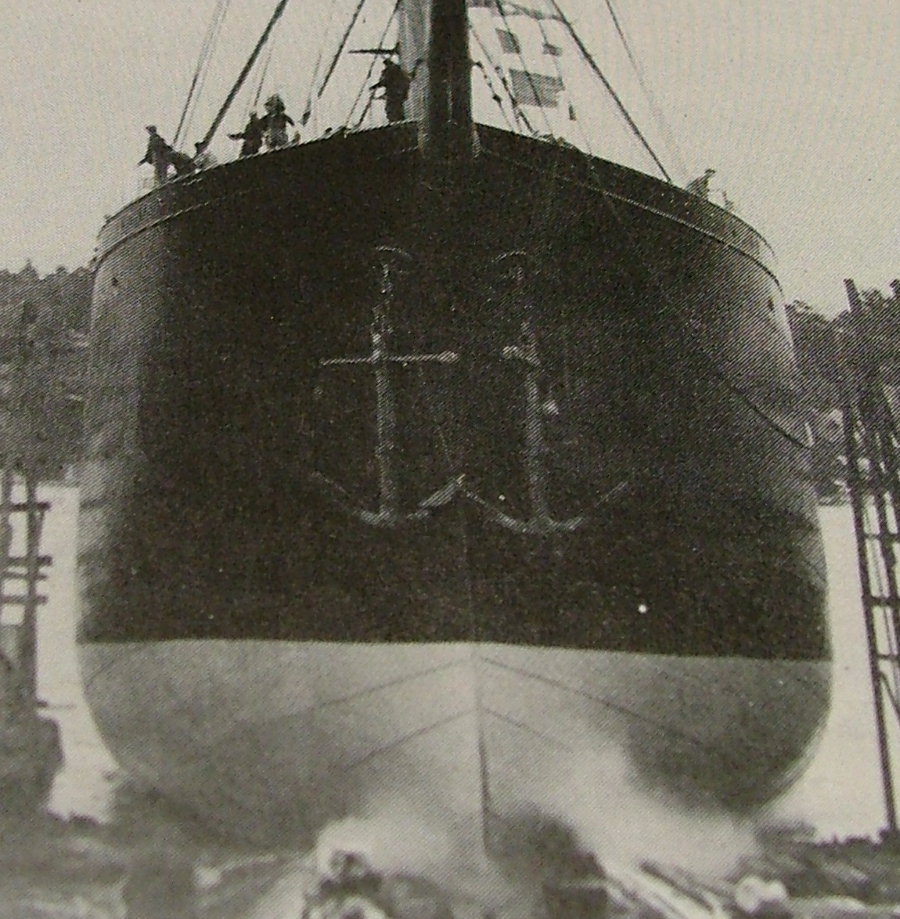


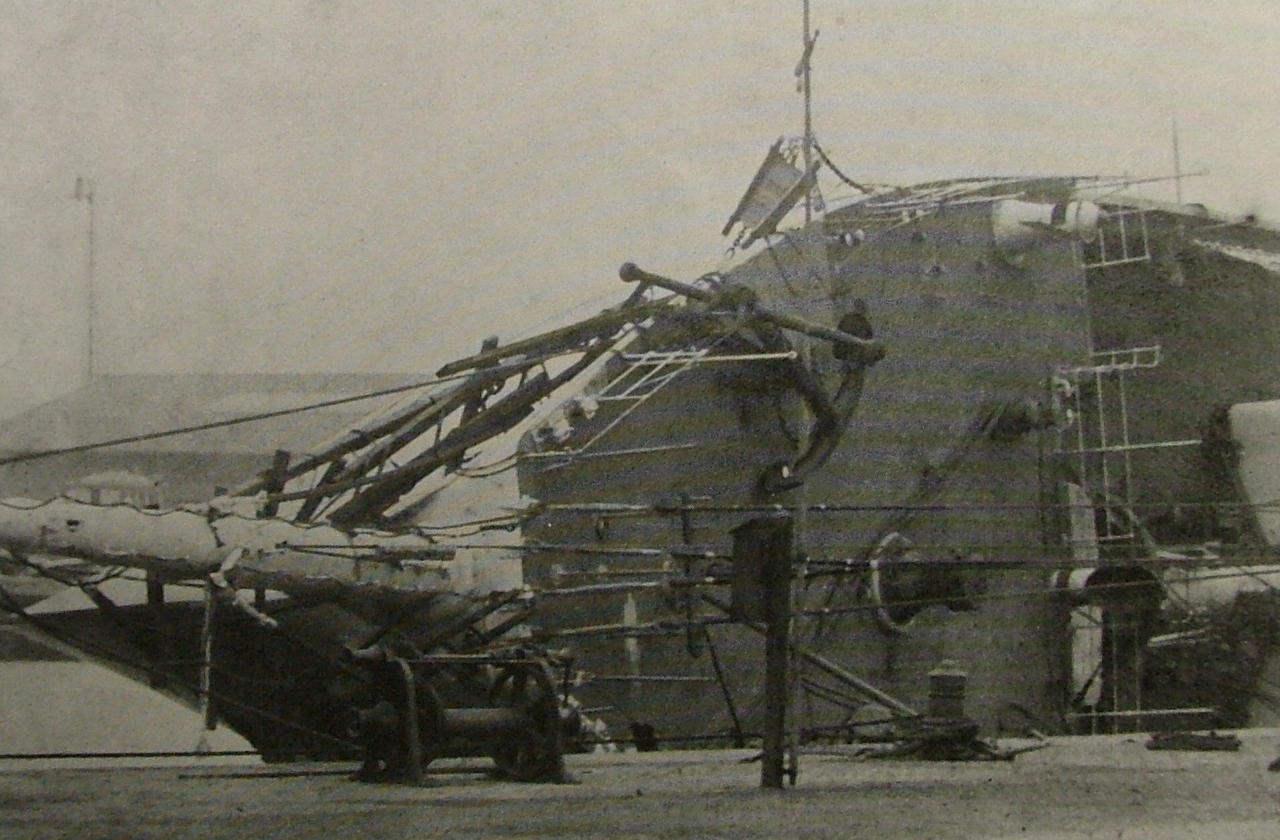










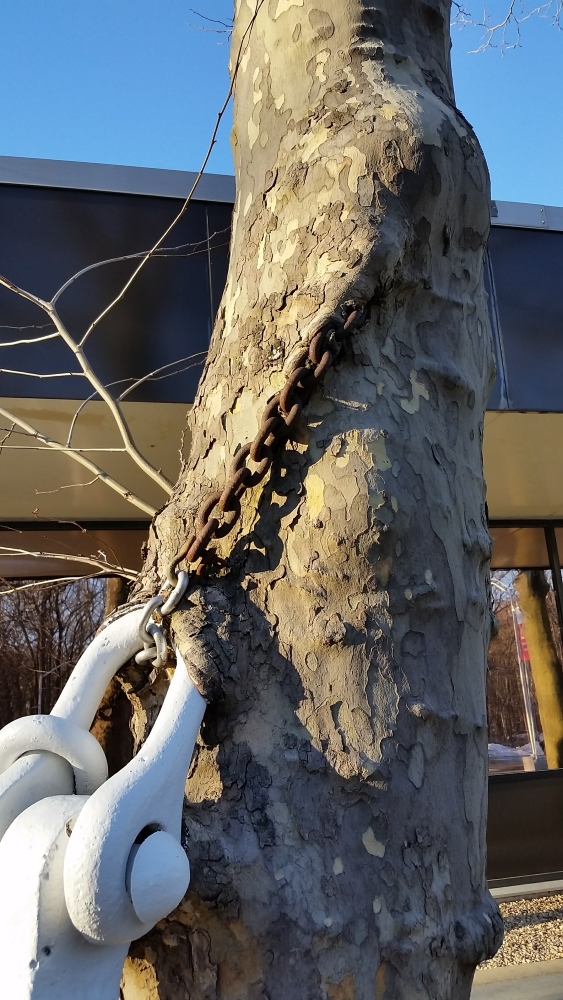
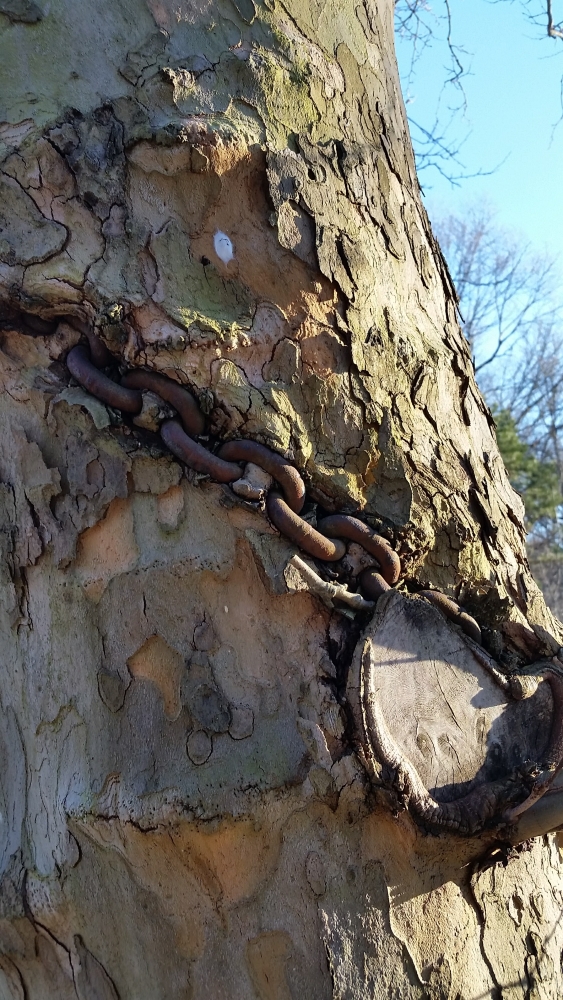
You must be logged in to post a comment.